What is Transformative Travel and Why Do It?

This episode sparked out of a realization we had recently about a throughline that connects everything we do as creators: transformative travel. We dive deep into what transformative travel is and why it’s so important, as well as share some of our most transformative travel experiences. We’ll also talk about how this realization is going to guide and shape the direction of the podcast going forward. We’ve been getting at this idea in one way or another through this podcast, our blog, and presence on social media. But we think we’ve finally hit the nail on the head of what exactly we want to champion in the world of travel, and life in general. It’s a great conversation, enjoy!
Subscribe and listen to The House Sitting Travel Podcast below or on your favorite podcast app. Just search House Sitting Travel in your app of choice or click these links: Apple Podcasts , Google Podcasts , Spotify , and Stitcher .
Last but not least, if you’re not a member of TrustedHousesitters and want to join, click here to sign up with a 10% discount just for our readers .
And now, onto the Trusted house sitters review!
The blog post here is an edited portion of the conversation to go over the main ideas. For the full conversation, be sure to listen to the episode!

What is Transformative Travel?
In a nutshell, transformative travel is personal development, fulfillment, and deep meaning gained through travel; how travel can transform our lives and our selves. Transformative travel enhances your life and helps you live a more fulfilling life.
In one way or another, both of us have had dramatic transformations in our lives, our values, and where we want to take our lives because of travels that we’ve taken and because of how we incorporate travel into our life.
Bottom line: we’ve transformed our lives through travel and so can you.
This doesn’t look one particular way and is something that can be very much tailored to who you are and where you are. Thinking of travel in this way doesn’t mean that you have to go to one particular direction.
And it works both ways; it’s a symbiotic relationship. You can take things that you’ve learned in your home life, while not traveling, and apply them to travel and vice versa. You can take things that you’ve learned while traveling and apply them when you get home.
These two spheres of “traveling” and “not traveling” aren’t so separate in our lives as we might think. They’re also merging more and more. We have more people working from home than ever, and that’s going to continue to be the case going forward.
How to Have a Transformative Travel Experience
There is no one way to explain this or to have a transformative travel experience. It’s a very open-ended idea. The main thing is that your experience somehow changes you and you emerge different than before.
Whether that’s a 1% change or a 50% change, that’s up to you to decide or figure out. We’re not pushing for any specific result oriented ways of thinking. But our experiences have set us on trajectories that we wouldn’t have been on otherwise.
The simplest way to think about it is to imagine a fork in the road. These travel experiences made us go down a particular path.
Thinking about travel in this way connects with how we think about slow travel . People think of slow travel as spending months in a place. But it’s more of a mindset than anything. You can have a slow travel experience in a few days.
Equally, you can have a transformative travel experience that took place over a short period of time, like an amazing hike, or people that you met in a chance encounter. It could happen within the course of a day or a few hours or it could be a whole trip.
A transformative travel experience doesn’t necessarily have to be a paradigm altering experience, but it could just shift your thinking in a different direction. It could be a tiny little fork or it could be a giant fork or anything else in between.
It all comes down to personalizing your travel experiences, choosing to do the things that you want to do and that align with your values, instead of following a set itinerary of places that other people decided you should see.

Our Transformative Travel Experiences: Veren’s Story
Veren: If I could share one experience, it would be when I went to visit a friend in New Mexico, over ten years ago.
It was so eye-opening because the lifestyle in New Mexico was so different to what I experienced living in NYC.
We have this oversimplified view of America, we talk about it being a melting pot, but then we get really frustrated when people have different lifestyles than us or don’t see eye to eye with us. You see this in the political divide that we are experiencing more than ever.
The truth of the matter is people do live very differently even within the spectrum of American individualism. There are different communities out there, each with their own history of how they became like that in the first place. These things don’t happen in a vacuum.
Sometimes you don’t know what you want in life until you test the waters somewhere else. That’s what my travels in New Mexico did. There was nothing glamorous about it or places that were super Instagrammable. I didn’t have Instagram then and I wasn’t trying to put it online anywhere.
For a lot of New Yorkers, they can’t imagine living anywhere else. But often, they haven’t tried. It’s really easy to forget that there’s a whole world out there when you’re in the microcosm of NYC, caught up in your work and all of life’s conveniences.
So my trip to New Mexico so really set me on a path to reconnect with certain parts of myself that I had back from my childhood.
If I tell the whole story, on a day to day basis what we did doesn’t sound like anything too terribly exciting or inspiring. But my mindset and openness to change allowed me absorb a lot of new values and then reflect on the ones I already had. Sometimes we don’t even realize how many values we have that have been put into our heads and we don’t really own them.
Often, we don’t think twice about how we do things. We take them for granted and don’t realize the disconnect later when we’re feeling dissatisfied with a lot of things in life. It might be because of the way we approach and do things. You might need some revision.

Our Transformative Travel Experiences: Sam’s Story
Sam: The first transformative travel experience I had on my own was when I moved to Spain right after graduating college. While I had an English teaching position set up through the government of Spain, everything else was completely independent. I had to find an apartment myself (in Spanish), get my visa, move there, all that stuff, on my own.
I had been living and going to college in NYC and couldn’t imagine living anywhere else. But I also knew I’d always wanted to live abroad, and since I didn’t get to study abroad in college, this was my chance and I took it.
Living abroad, while difficult, was incredibly transformative. I met so many different people from different walks of life. I had to put myself out there in another language, which got me out of my comfort zone every day.
There was so much to my experience living in Spain, but it was a huge fork in the road for me. I thought my life was going to go in one direction, where I’d get a PhD and enter academia, but going to Spain changed all of that. It opened up my eyes to other possibilities, like living the creative life that we do now.

Sam and Veren
Posts written by Sam and Veren are collaborative, informative posts that we write and edit together. These posts include our vegan city guides and informative house sitting and expat life in Spain posts.
You may also like
Is it safe to travel during the holidays..., episode 13: alternative destinations – sarajevo, bosnia +..., 2019 in review + 2020 plans, our year in review: 2017, plant-based holiday feasting foods, episode 6: the state of house sitting in..., maintaining friendships remotely, halloween in new york, is the digital nomad lifestyle right for you, why we moved to madrid.

- Privacy Overview
- Strictly Necessary Cookies
This website uses cookies so that we can provide you with the best user experience possible. Cookie information is stored in your browser and performs functions such as recognising you when you return to our website and helping our team to understand which sections of the website you find most interesting and useful.
Strictly Necessary Cookie should be enabled at all times so that we can save your preferences for cookie settings.
If you disable this cookie, we will not be able to save your preferences. This means that every time you visit this website you will need to enable or disable cookies again.

What Is Transformative Travel? How To Experience Incredible Personal Growth On Your Next Trip!

So, what is transformative travel, you ask?
If you search the term on Google, you’ll find it has a wide variety of other associated terms such as mindful travel, purposeful travel, deep travel, and so on and so forth.
Transformative travel being a core pillar of the blog is a topic I wanted to touch on and explain in a way that can make more sense to those who may not know what it means but are curious.
Maybe you have had an experience on your travels that gave you an epiphany or clarity around something you weren’t aware of before, or maybe you just want to know what this term means because you’ve heard it before – regardless of your question, I got you!
So without further ado, let’s get into what exactly transformative travel is!
Like it? Pin it!

What's Inside This Post:
What exactly is transformative travel?
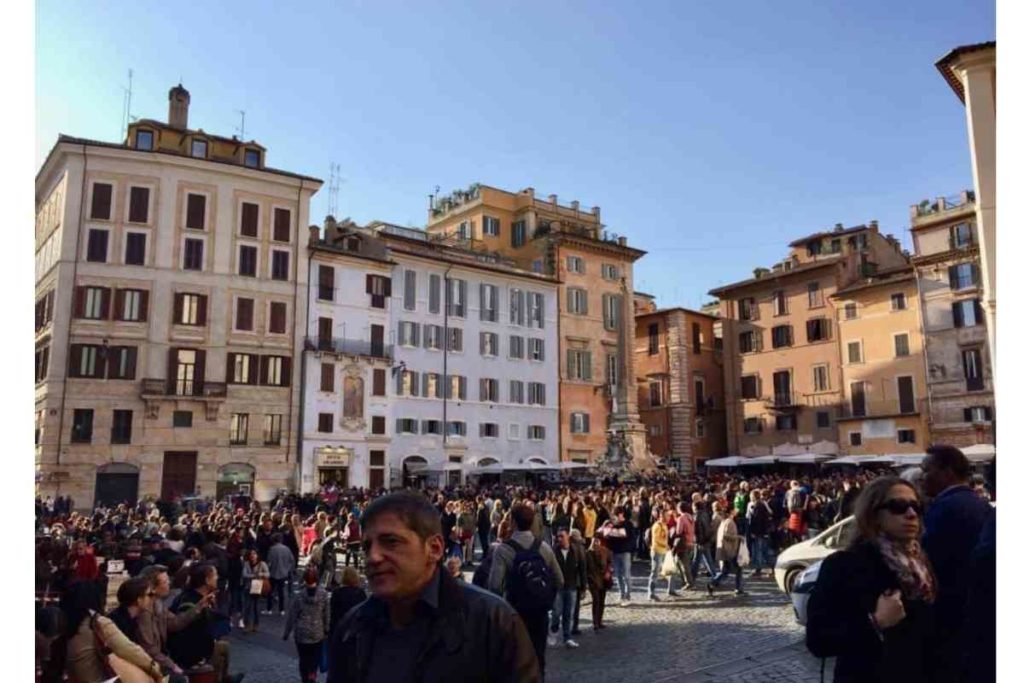
While the term transformative travel may have many different definitions, each decided on by the traveler experiencing the transformation, one thing is certain amongst this, and that is this: transformative travel.
Transformative travel is a travel experience or an experience within the journey that has changed something for someone, on a deep and personal level.
Whether it’s a realization that inspires you to take big action in your life such as changing your job to something more fulfilling, more you, because you had a conversation with someone who told you about their exciting and fulfilling job.
Or perhaps it’s an increased level of awareness and gratitude for the things you have at your disposal in your home country, such as clean running water, a heater for the wintertime, or an abundance of possibilities and options that you have – this is up to each individual.
And as many of us will agree, travel always somehow transforms something within us.
No matter how big or small it may be.
How is travel transformative?
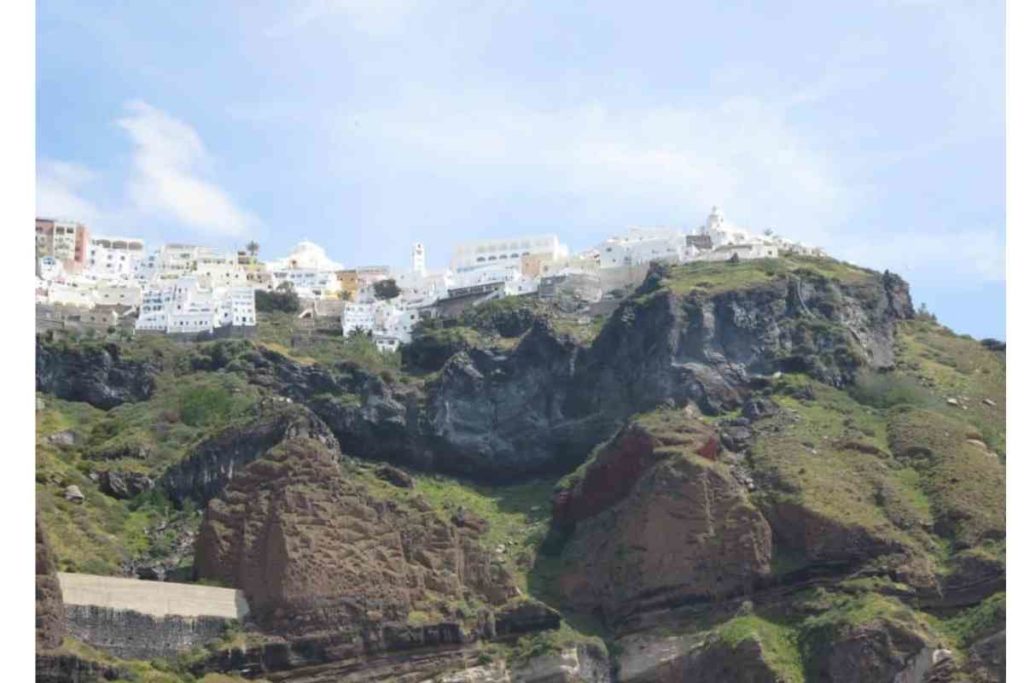
Experiencing transformative travel can sometimes be accidental, as in, you go on a trip and you just happen to come across something that leaves you thinking and inspired to change something in your life, or simply reflect on an area of your life, current habits, and your environment (home country).
Sometimes you can also plan a trip with the intention to travel with the purpose to connect to the local culture and locals, in which case you may prepare yourself before the trip, and then upon your return home, while on the trip itself, you may do immersive activities such as cultural cooking classes, activities that bring you face to face with local communities, retreat events with planned activities etc.
Upon returning back home, you may have set progress in which you will get to reflect on your experiences, how they made you feel and how you can take those experiences and adapt them into your everyday life, in whichever way you’d like.
As you can see, there is more than one way to experience your own transformative travel, either planned or not planned.
I can only speak from experience, so I’ll share that when I travel, I usually don’t plan out all my activities, and I oftentimes like to roll with whatever feels good to do that day.
I find that is when inspiration from appreciating the moment and where I am hits me , and I am able to take things slow enough to really commemorate certain scenes, emotions, situations, and thoughts in my head, by taking photos, and/or writing them down.
Read More: How Travel Have Influenced Me: A Personal Example of Transformative Travel
When does transformative travel actually begin.
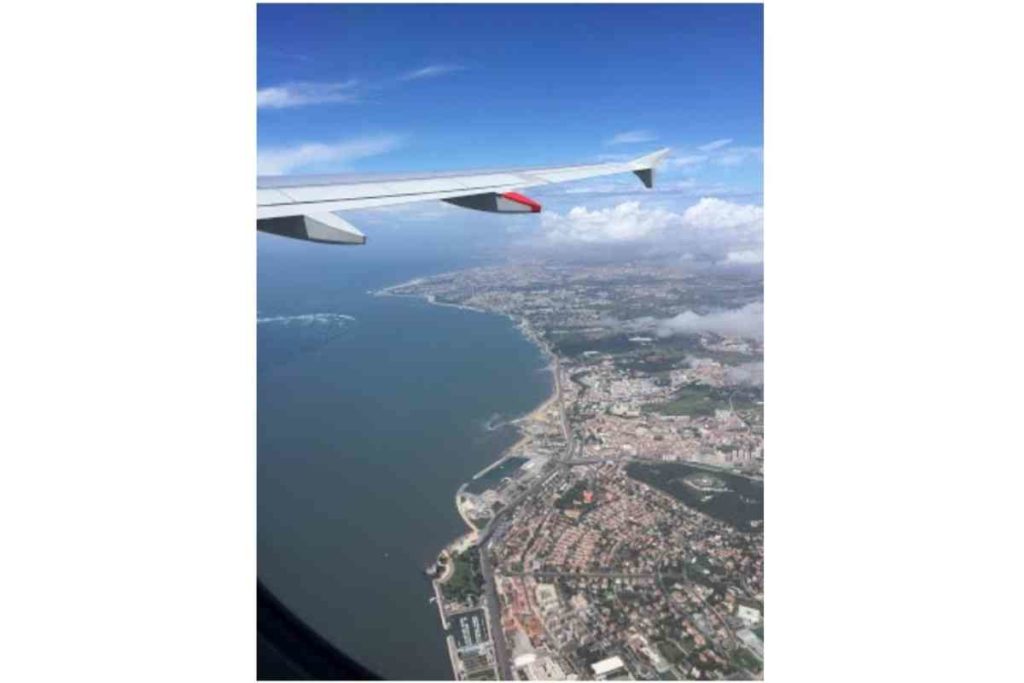
It begins even before you step on the plane.
Those moments of prep for your trip as you’re packing or even buying last-minute items for the trip, etc. it all helps kick start the experience.
Even when you’re planning out your trip itself, and booking hotels and activities, and then you’re packing your suitcase.
This is when you can start setting those intentions that you may begin to set for yourself, and the questions that may arise.
Intentions : A purpose or objective that you are setting to experience on your travels.
I’d really like to try something new, maybe the local dish.
I’d really like to go on a day trip outside the city
I definitely want to people watch at a cafe in some square somewhere
Having a set of questions (pre and post-travel) can really help you guide the experience a bit, especially if you’ve never set intentions for travel, have experienced or become aware of transformative travel, etc.
So in order to help you out with that, and really jump-start this experience to life, I have created The Transformative Travel Pre & Post Journal Prompts.
A FREE workbook designed to help you with pre-travel and post-travel questions that are not intimidating whatsoever (you can enjoy your trip however you’d like and still be able to get some new idea, inspiration, clarity, etc.) so that the clarity around those moments you experienced abroad can come to life, and continue even while at home.
The Transformative Travel Pre & Post Journal Prompts
The pre and post-travel questions to get you started on your own transformative travel journey – yours for FREE!
Check your email for your copy of The Transformative Travel Pre & Post Journal Prompts ! Make sure to also check your spam folder if you can’t find it right away.
What is the importance of transformative travel?
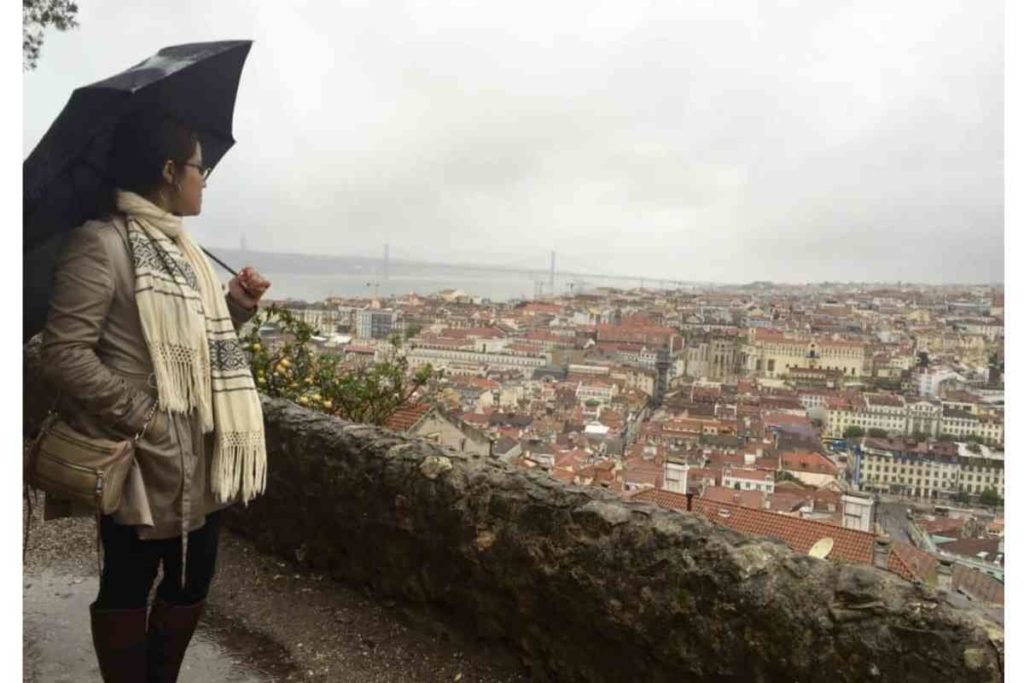
Perhaps you are in search of something different, and something you can get lost in navigating.
You are in search of a new experience that will gently force you to return to relying on your senses to navigate the world and thus be inspired by the place that you are visiting.
One of the beautiful things about transformative travel is that travel has a way of stripping us to our bare senses in terms of figuring out how other cultures and countries function and how to function ourselves (like ordering a coffee and not knowing what the local etiquette is – we’ve all been there?).
All the while, also heightening our awareness of things that we just weren’t aware of before in our usual environments.
That’s the sweet spot.
Transformative travel is important because it’s self-development in the purest, most exciting way!
Read More: How Do You Deal With Coming Home From Traveling? 7 Very Helpful Post Travel Blues Tips For Beginners
At home, you may feel bogged down, maybe even a bit jaded with life, and drained from your work/life routine and non-existent balance that you view travel as a literal escape.
But then you return back home, back to the routine you tried escaping, to begin with, and then what?
What are the lessons, experiences, stories, clarity, that left an impression on you? How can you bring that back and adapt it to your everyday life? How do we grow from travel?
A few ways in which travel can be a transformative experience
- A change in latitude is a change in attitude – one of my favorite quotes that describes how different weather, sights, smells of dirt, ocean, or bustling city has an effect on our mood and
- More opportunity for physical movement
- Exercise creativity and imagination
- Spending time in different environments encourages
- Increased alert and awareness of your surroundings
- and so much more…
Read More: 7 Amazing Ways You Can Practice Self-Care While Traveling
How can i create my own transformative travel experience.

As I mentioned before, if you really want to prepare your next trip to be a transformative one (you don’t have to go that far to experience it by the way) then I encourage you to download this FREE Transformative Travel Pre and Post Journal Prompts designed to open your mind to the intentions, growth, and learning potential from travel.
Leave me your name and email down below, and I’ll send it to you right away!
Have you experienced a transformative travel experience?
What was it like?
What was your biggest takeaway, and what did you learn about yourself?
If you haven’t experienced it yet, you’re only a few questions and moments away from diving in.
To more travel moments like these ✨

Hi! I'm the founder and writer behind Travel Notes and Things. I write posts about travel destinations, share travel tips and resources, as well as talk about transformative travel to help inspire Latinas to travel to their dream destinations!
Similar Posts
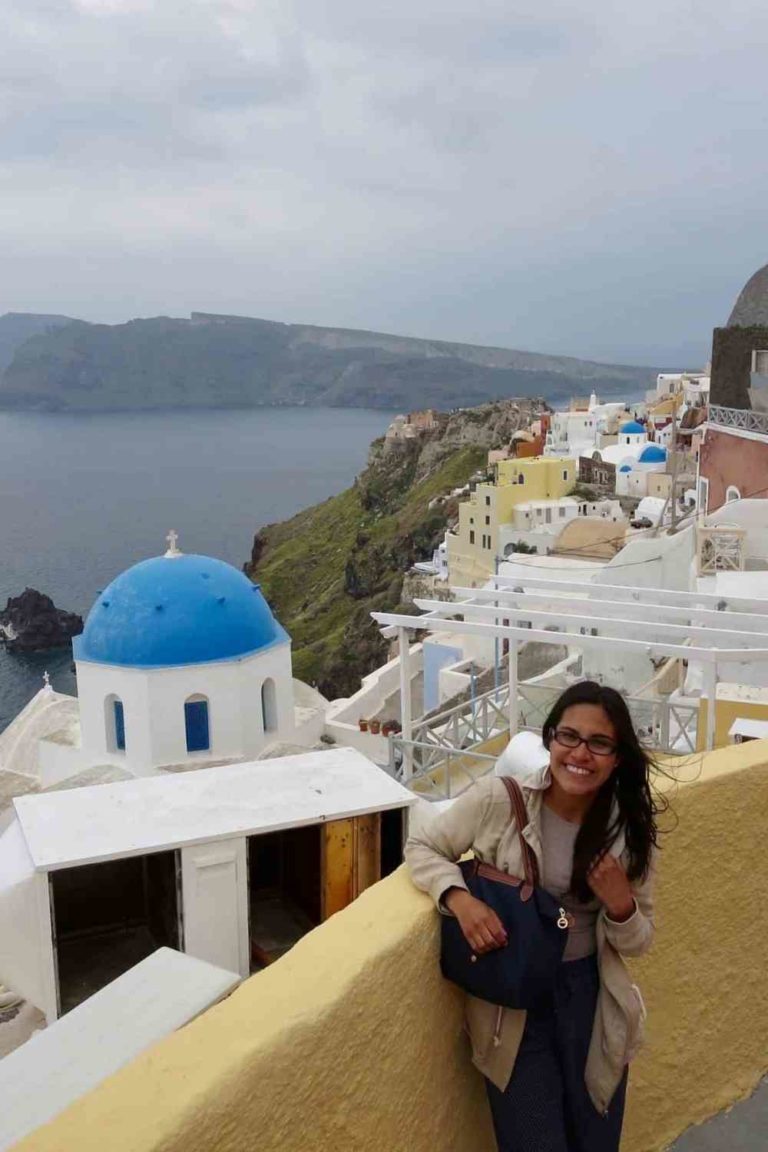
3 Impactful Ways To Start Living Your Travel Truths
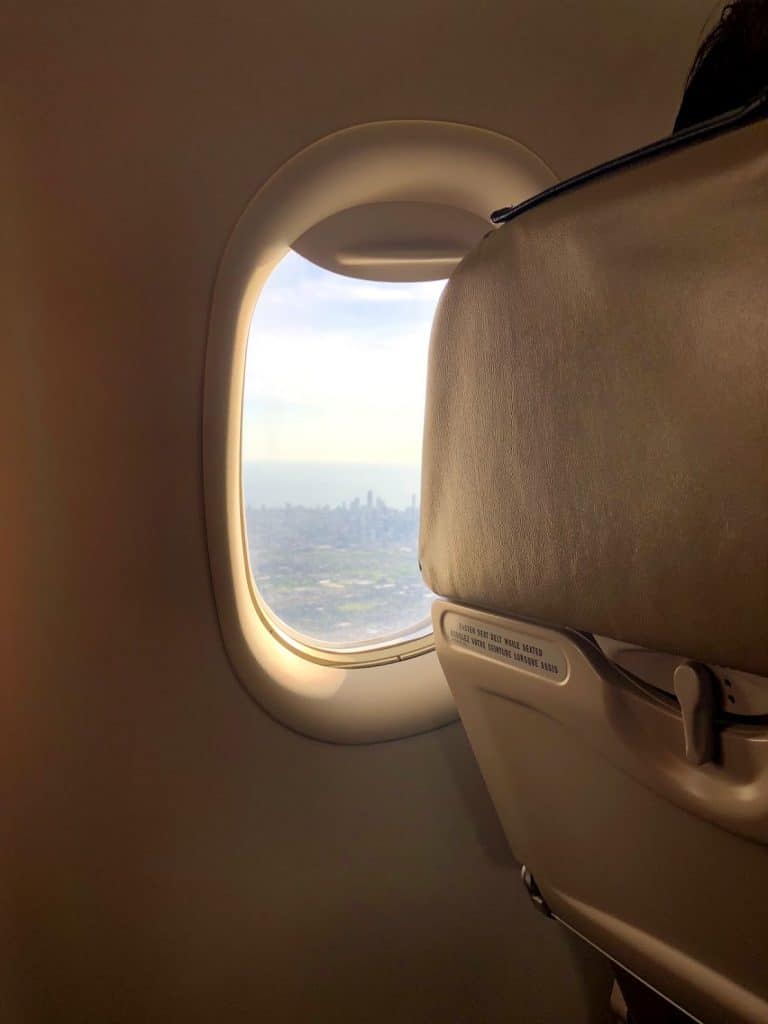
Travel Related Thoughts To Help You Get Through Travel-less Times
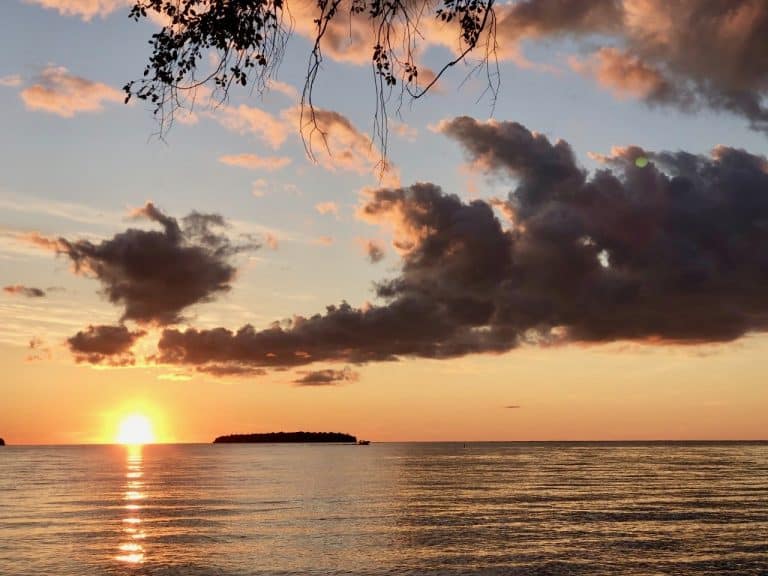
5 Mistakes People Accidentally Make When They Return Home From Traveling
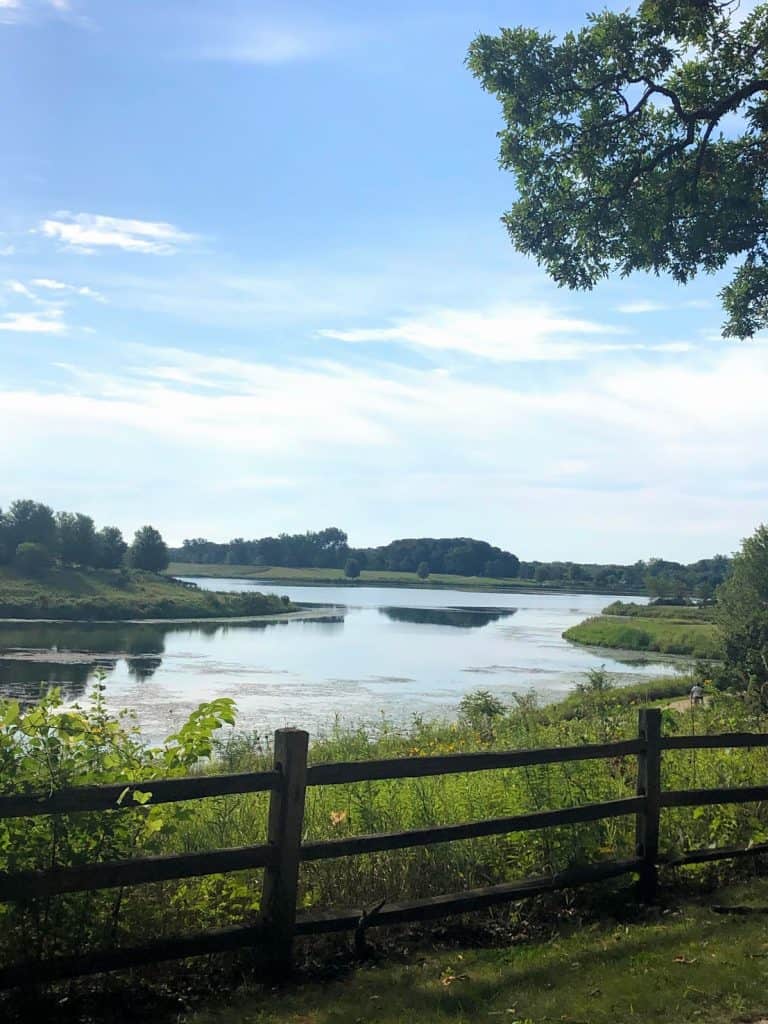
Travel Reflections: 7 Ways To Allow The Magic Of Travel In Your Life
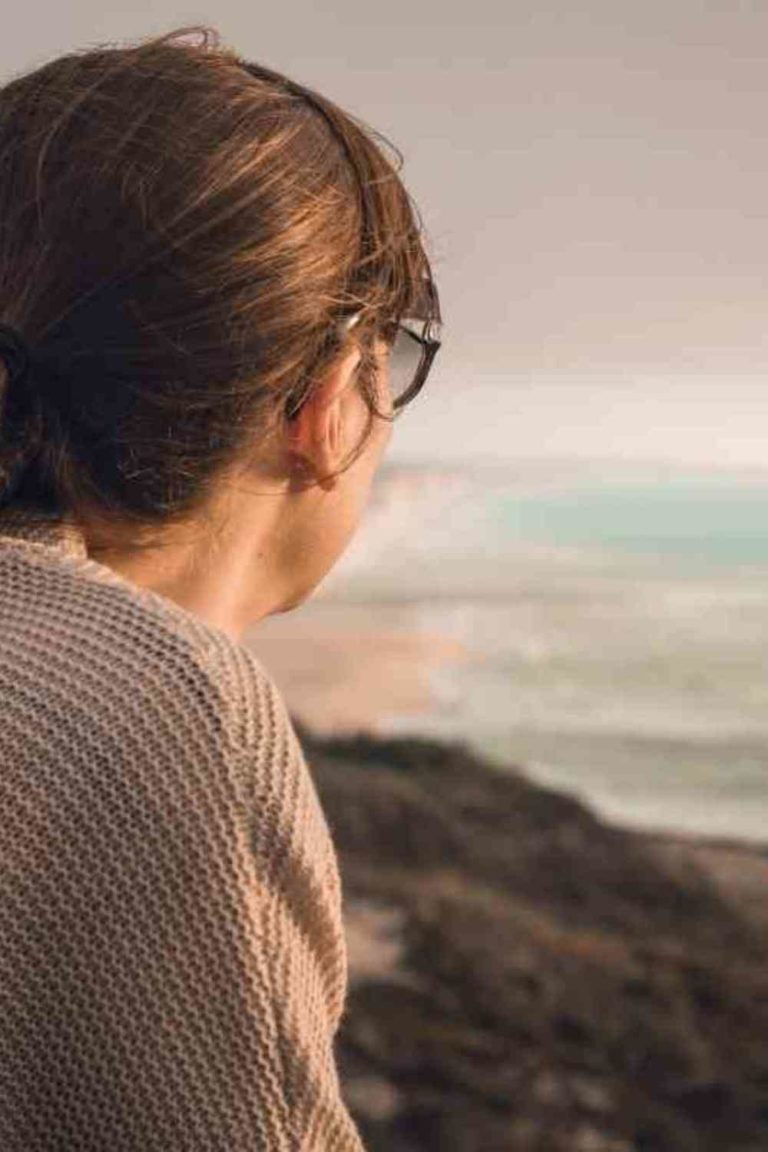
The Most Motivating Reverse Culture Shock Post You Need To Read
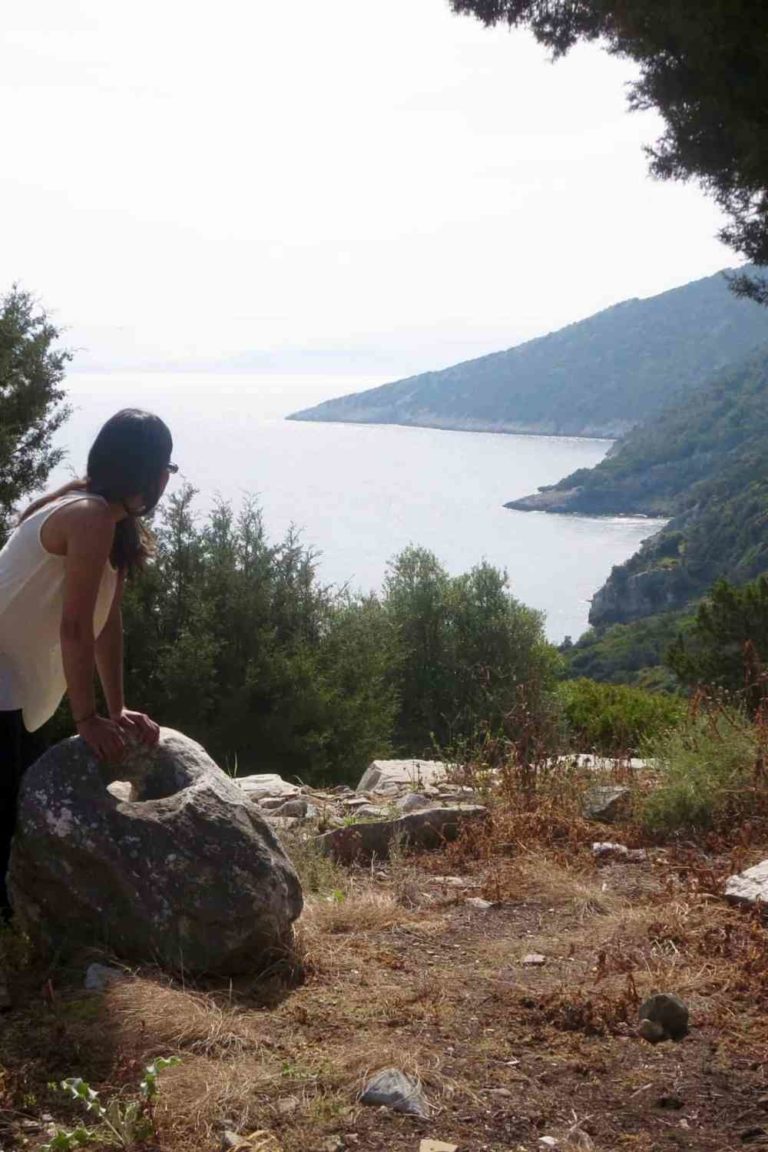
3 Powerful Ways To Bring Elements Of Travel Into Your Everyday Life Without The Internet
Leave a reply cancel reply.
You must be logged in to post a comment.
This site uses Akismet to reduce spam. Learn how your comment data is processed .
Privacy Overview

- Purpose & Impact
- Health & Fitness
- Mind & Spirituality
- Nature & Adventure
- Learning & Upskilling
- Creativity & Self Expression
- Love, Sex & Relationships
- Success & Leadership
- Healing & Recovery
- Our Remarkable Transformers

- Meet the Founders
- Frequently Asked Questions
- Become a Transformer
- Experiences

Be the first to know about our new life-changing trips.
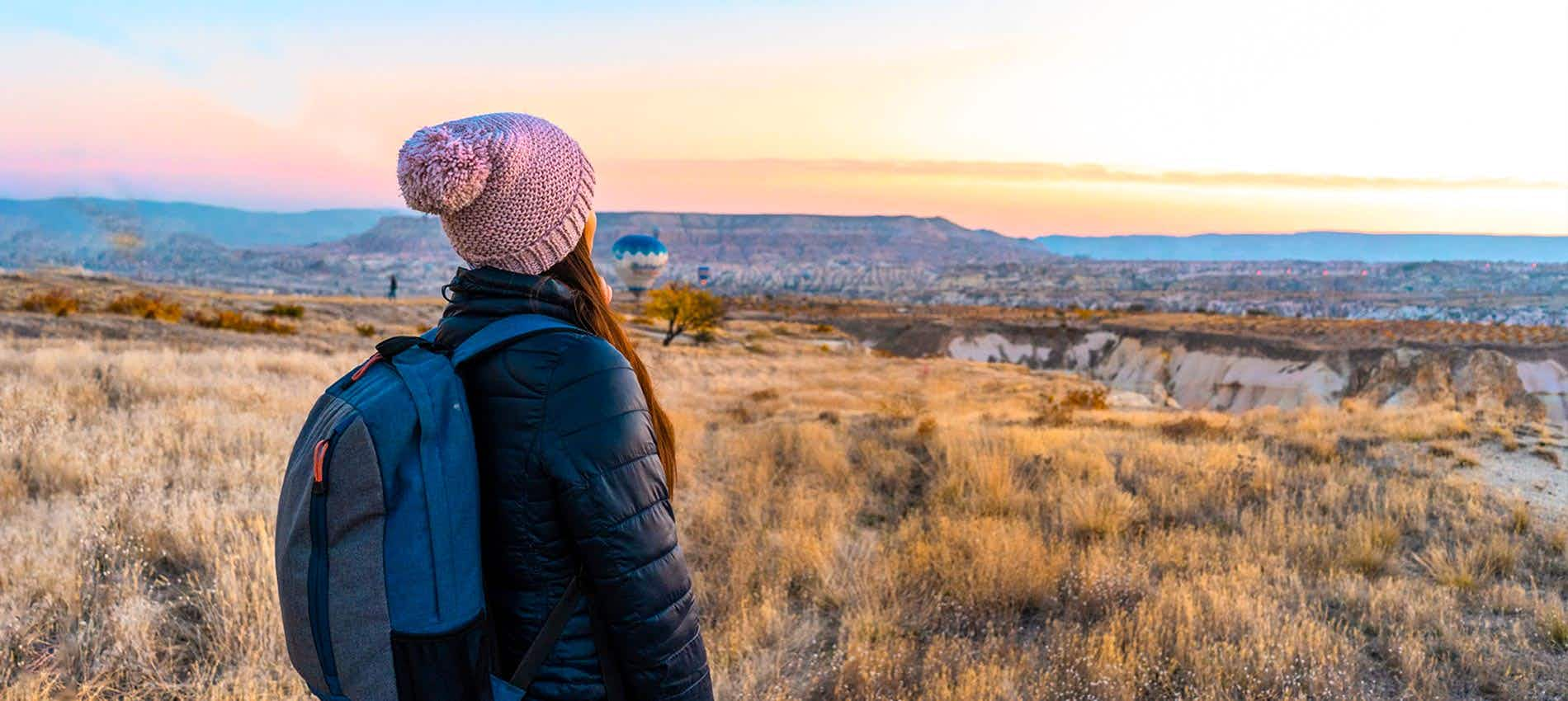
Welcome the Seekers.
For the ones set on positive change and for the believers that there can always be a better version of themselves. We are a travel booking platform guiding like-minded travellers to take journeys towards a different destination – a happier, healthier, more purposeful self. We’re for those ready to up-skill, grow, heal, and connect with the world through the joy of travel.
Why We Love Transformational Travel
Transformational experiences.
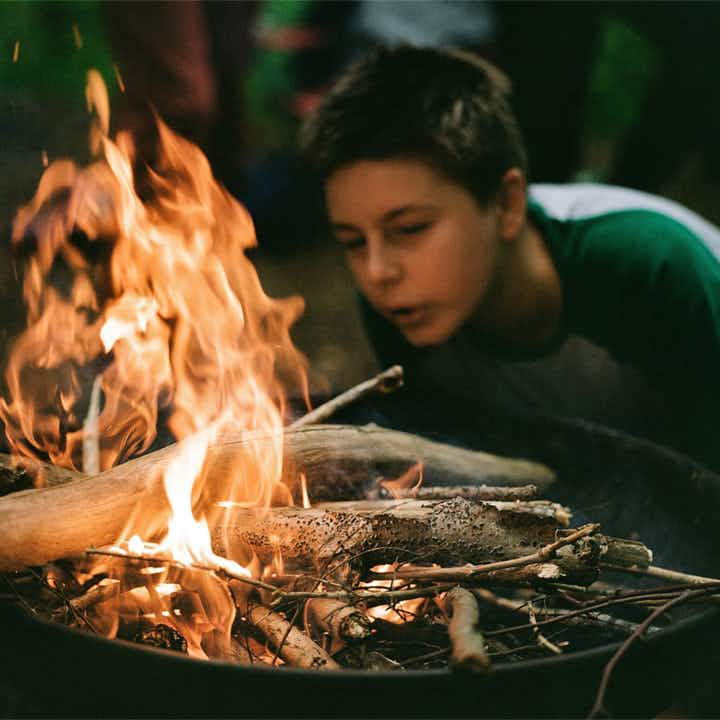
Experience by Region
Arctic circle, central america, middle east, north america, oceania/pacific islands, south america.
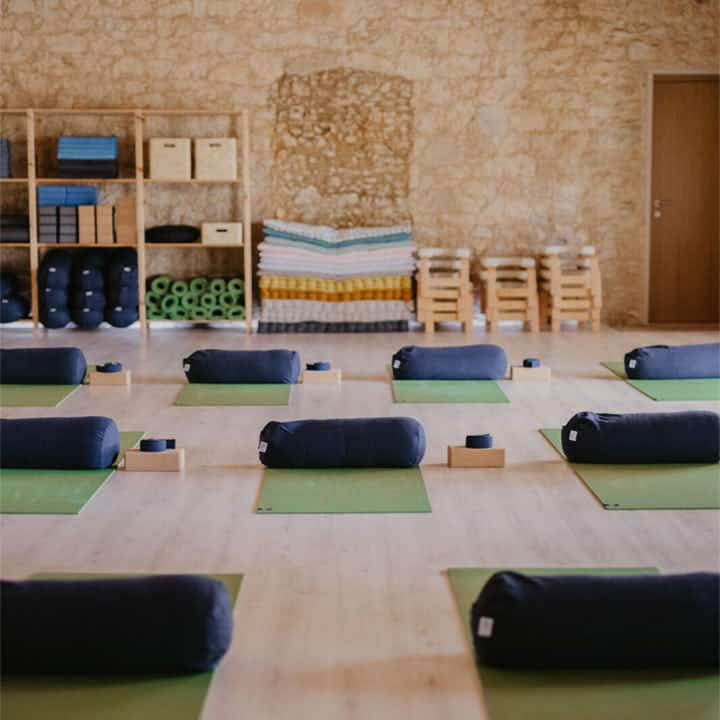
Remarkable Transformers
Meet some of our inspiring hosts from around the world who are doing amazing work to offer you the very best life-transforming experiences.
Things to Know
As featured in.


What is Transformational Travel?
Over the last year, The Long Run has been exploring how it can help members to create, deliver, market and enhance transformational travel experiences. To be truly sustainable, we believe that travel needs to influence people beyond the length of their stay.
To support us on this journey, we’ve been working closely with The Transformational Travel Council who have now launched a kickstarter for a new journal written by expert Eric Rupp. Here we ask Eric what transformational travel means to him.
I’ve been trying to describe, define, and justify my belief in transformational travel for about five years now. My answers to inquiries have changed, evolved, and grown but the question tends to stay the same: What makes a trip, a destination, an itinerary different enough to label it “transformational”?
Each one of us has our personal history and set of experiences that make us who we are. We carry with us a unique blend of interests, abilities, and desires. Our privileges and challenges affect our place in the world. With so many different factors at play, how could one safely sell any given experience as transformational?
I finally settled on a short answer: one can’t. So, what is transformational travel, and what makes it different? This question presumes that the transformational element is the property of an experience, an activity, or perhaps the destination and therefore transformational travel must be about somehow wrestling from those moments spent journeying some yet untapped power that will forever change us.
The truth is that transformation can never come from travel alone, so to find the answer we must first shift our perspective. The power of transformation lies within the traveller.
Yes, travel may be the catalyst, the inspiration, and the vehicle. It can be incredibly beautiful, powerful, and magical. The places we go, the activities we do, the people we meet all matter and can have a deeply profound influence on us, but transformation is created from within. Travellers themselves create transformation.
The personal boundaries we push, the connections we make along the way, and even the destination itself can influence the results, but for change and growth to be lasting and durable enough to be considered transformational, it cannot be the property of the trip, but of the traveller. A trip can inspire change, it can be transformative, meaning it has the power to change us, but we must do the transforming ourselves.
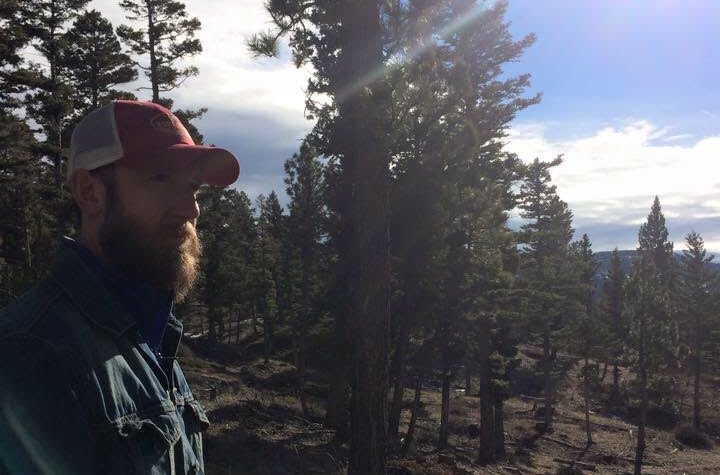
At the Transformational Travel Council, we define transformational travel as:
“Intentionally traveling to stretch, learn, and grow into new ways of being and engaging with the world. ”
Transformational travel is not a noun, but a verb. It’s an action. A process. The missing element that often gets overlooked during the conversation is the traveler themselves. We have left the traveler out of the equation so often that we forget to even consider them when we talk about transformational travel. It’s time we start thinking about how travel can be used intentionally as a force for good in this world, and to achieve that we need travelers to be a responsible and active part of not just the experience but the outcomes and effects of that experience.
To help bring about that lasting transformation that travel can inspire, we have created the “Transformational Travel Journal.” This journal leverages the lessons of a vast array of travelers and travel professionals alike to help you create that lasting transformation in your own life. Visit our Kickstarter now to get a discounted early release copy for yourself and travellers in your world.
This post was provided by Eric Rupp, Author, The Transformational Travel Journal i n Collaboration with The Transformational Travel Council .
KEEP IN THE LOOP . Add your name to our mailing list and keep informed on The Long Run.
Subscribe to The Long Run Newsletter
As we continue to develop resources to expand positive impact within the travel industry, we’ve created a new Resources page to pull reports and training together in one place .
Please take a look HERE , and feel free to share our new Breaking Down Barriers: Sustainability Accessible to All report HERE . Holly has social media assets so please contact her at [email protected] if you would like to share those.
We are delighted to announce that the dates for the 2022 Members Annual Meeting have been set and plans for the agenda are underway.
The meeting will take place at Borana Lodge and Lengishu in Kenya from the 22nd – 26th of October . We have received overwhelming responses from over 40 participants who are planning to attend the meeting.
For all those who have confirmed attendance, we have sent an email with all the details on the logistics and how to make your 20% deposit payment now to secure your spot. Please get in touch with Joy at [email protected] in case of any questions.
- 2017 – Tourism for Tomorrow Awards Finalist – Environment Category
- 2009 – National Geographic Adventure – Top 50 Eco lodges
- 2008 – Virgin Holidays Responsible Tourism Awards – Highly Commended
- 2007 – Tourism for Tomorrow Awards – Only finalist in Latin America
We’re looking forward to seeing you this week for The Long Run’s 11th Annual Meeting.
Please see the schedule with daily Zoom links HERE .
As you know, The Long Run would like to better capture our members’ impacts, particularly, members’ contribution to mitigating the climate and biodiversity crises .
In order to assist us with this process, we are appealing to all members to share any studies that you have been involved with/or know of that are looking at the environmental values (incl. carbon sequestration) or the ecosystem values/services of the area you are located in and are helping to protect.
This will allow us to better estimate how much carbon is sequestrated by your property, our membership in total, and provide an estimate of ecosystem values.
We look forward to receiving any study or information you may have access to! Please send to [email protected] .
ALTOP stands for “All Love to our planet”. For 30 years, the publishing house has consistently been committed to the promotion of green solutions, products and services. Together with their partners, they give orientation to key decision-makers and help them to link economic success with social responsibility.
The publishing house began in 1984 with the alternatives Directory (now ECO-World life – the shopping guide for a healthy, enjoyable and sustainable lifestyle). The aim was to stimulate consumption in a targeted way and to ensure the urgently needed networking of companies and environmental activists.
In 2006, the publishing house responded to the increasing global discussion about responsible, sustainable business practices realising sustainability should no longer be seen as a future vision, but as an action taken in the daily business process. The response was to launch the magazine “Forum Sustainable Development”, the highest reach CSR magazine for politics, business, non-profit organisations and society in Germany. Forum Sustainability is published quarterly, brings daily online contributions and thus provides a cross-medial communication network.
www.forum-csr.net

Transformational Travel: Experiences That Can Change Your Life
Travel can change your life in ways you never imagined! Check out this guide for some of the best life-changing travel experiences from destinations around the world.
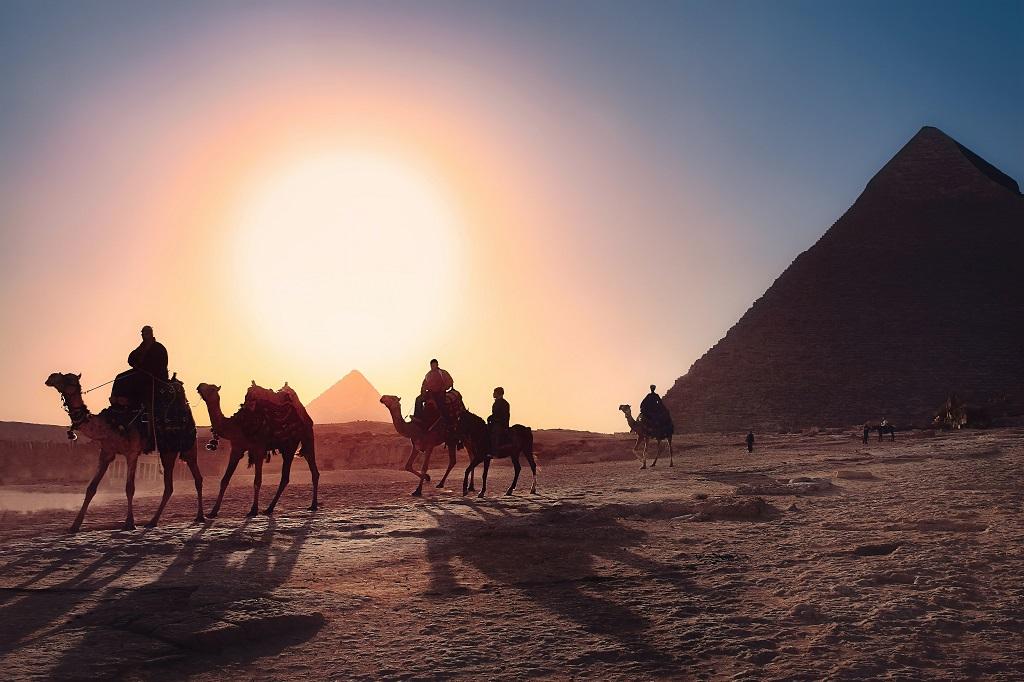
You often hear people talk about how travel changes you in unexpected ways. Whether it’s feeling like you’re more worldly, gaining a new level of self-confidence, or discovering a true passion, everyone is impacted in a different, yet important, way.
Here at Let’s Roam, we strongly believe in the transformative power of travel since many of us have experienced it firsthand. So we’ve compiled a list of some of our most notable travel experiences. These have been curated from my own travels as well as those of friends and co-workers. I hope they have as big of an impact on you as they have had on us!
Put the extra into extraordinary with Let’s Roam!
With hundreds of scavenger hunts, destination guides, and must-see lists, Let’s Roam can help you find the things that make every destination extra special. To learn more about amazing destinations around the world, make sure to check out the Let’s Roam Explorer blog where you can find everything you need to plan the perfect trip. You can also download the Let’s Roam app to access hundreds of great scavenger hunts for locations across the Americas, Europe, Asia, Australia, and New Zealand!
15 Transformative Travel Experiences
Below you’ll find a list of travel experiences that can change your life. Whenever you embark on a new adventure, it’s important to remember what you get out of an experience is directly related to how you approach it. If you want to really “feel” something, you have to be open to it. Go into everything with an open mind. You may be surprised at how quickly the stresses of everyday life can morph into a feeling of child-like wonder!
1. Go on a National Park road trip.
There are few things more all-American than a cross-country road trip. Throw in a few stretches of Route 66 and some of America’s most spectacular national parks and you have the perfect recipe for the vacation of a lifetime! The United States is home to 424 national park sites including national parks, national historic sites, and national recreation areas. Regardless of whether you hit two parks or 20, a national park road trip gives explorers to learn more about the beautiful country we live in and can be a life-changing experience.
Adventurous travelers can go hiking, camping, kayaking, or rafting in many of the parks. Meanwhile, people looking for a more relaxing trip can go stargazing or sightseeing. The opportunities for outdoor activities are endless. While these adventures are certainly great for your physical and mental health, the confidence that you gain from completing an epic hike or overcoming something that really scares you can have a tremendous impact on you in the future.
If you’re traveling with kids, this can give them a chance to learn more about nature and their place in it. You can bestow a love of adventure and respect for our environment in these little learners that will last a lifetime. As a bonus, it can also give them lots of cool stories to tell their friends!
Expert tip: If you’re planning on visiting three or more national parks, make sure to pick up an America the Beautiful National Park Pass. Offered by the National Park Service, it costs just $80 per year and gives access to more than 2,000 different NPS-managed areas including the Grand Canyon, Yosemite, and Zion National Parks. Since many of these parks cost anywhere between $30 to $35 to enter, this could provide a very cost-effective alternative to buying expensive park tickets.
2. Take a journey through India.
India is one of those places that is exactly like you’ve read and heard while still being nothing like you expected. From the sounds, the smells, and the sights, it’s all-encompassing from the moment your flight touches down on this fabled land.
Most visitors will start their Indian odyssey in New Delhi. As the country’s capital, it has some of India’s most important buildings as well as some of the most fascinating ruins. The labyrinth of narrow streets in Old Delhi gives you a fantastic introduction to the chaos that awaits in this spellbinding country while also giving you an inside look at the daily lives of people in one of the world’s biggest cities.
Meanwhile, the surrounding area of New Delhi provides a glaring juxtaposition to Old Delhi’s chaotic streets with its wide avenues and meticulously maintained houses and yards. This is where most of the city’s British colonial-era buildings are located, and you may find yourself wondering if you’ve somehow been transported to London as you wander around!
From Delhi, you can head in virtually every direction and find something amazing. If you’re short on time, you can easily reach the breathtaking Taj Mahal from Delhi via an express train, or you can include Jaipur in your itinerary and travel along the famous Golden Triangle. While the overall experience is slightly less majestic than what thousands of Instagrammers and travel bloggers try to show, this doesn’t actually take away from the experience. Instead, it adds to it.
However, if you really want to experience incredible India, you need to venture off the beaten path a bit and visit places like the small town of Bundi, the ancient fort city of Jaisalmer, and the lakeside city of Udaipur. These very different cities can give you insight into how multifaceted the country is.
If you want to venture even further off the normal tourist itinerary, you can travel overland to Mumbai and then onwards to the beaches of Goa and Valkarna, the tropical backwaters of Kerala, or the bustling city of Bangalore. The southern section of India is much more laid-back than the bustling north, and this is a great alternative for people who find other parts of the country a little too overwhelming.
Expert tip: Train tickets tend to sell out really quickly in India thanks to the 1.4 billion people who all seem to want to ride the train at the same time. It’s also a little challenging to buy tickets with a foreign credit card as the main government train website doesn’t take international cards. Luckily, you can buy a special quota of tickets that are available only for foreigners. These can usually be purchased last minute. Although they’re a little more expensive than normal tickets, it’s definitely worth it!
3. Hike to Machu Picchu.
As one of the most famous ancient ruins in the Americas, it’s almost impossible to find a must-see travel list without this mind-blowing attraction included. Despite the impression that it’s in the middle of nowhere, Machu Picchu is surprisingly easy to get to. While it’s possible to take a train to Machu Picchu from Cusco, if you want to have a truly mind-blowing experience, we highly recommend following in the footsteps of the Incas and walking there via the ancient Inca Trail.
Most visitors start their trip to Peru in the capital city of Lima. You can then take a bus or flight to Cusco. It’s a good idea to spend a few days there getting used to the elevation before attempting anything strenuous. After you get acclimated to the altitude, you can begin your trip to Machu Picchu. The starting point for the Inca Trail is in Ollantaytambo. From there, it’s a four-day hike to Machu Picchu. With any luck, you’ll arrive early in the morning on the fourth day before any of the other tourists get there.
Expert tip: Hiking to Machu Picchu is on the travel bucket list of many people. As a result, the Inca Trail tends to sell out very quickly. If you aren’t able to get a booking on one of these hikes, don’t despair. The Salkantay Trail is there! The Salkantay Trail is a five-day hike that leads you through the beautiful Andes Mountains to the town of Aguas Calientes.
Rather than trekking along the old Incan pathways, you cover trails that lead through breathtaking passes and alongside meandering rivers. It’s a different experience than the Inca Trail but magical all the same!
4. Explore the Galapagos Islands, Ecuador.
The Galapagos Islands are one of the world’s most biologically diverse places on the planet. Hundreds of species of plants and animals call this Pacific island chain home. It’s one of the world’s best places for snorkeling and scuba diving thanks to the pristine waters and abundance of marine life.
Getting to the Galapagos Islands is much easier than you may think. First, you need to fly to Quito, the beautiful colonial capital of Ecuador. From there, you can take a short flight to one of the main inhabited islands. You can then travel between three of the biggest islands by public ferry and stay in local accommodation.
Alternatively, you can join one of the multi-day island cruises. These will take you to some of the smaller, more pristine islands that are only accessible by private boat. However, they do tend to be much more expensive than creating your own DIY experience. This could put them a bit out of reach for people traveling on a budget. Make sure to compare both options before making a final decision as this can have a huge impact on the kind of experience you have.
5. Snorkel in the Great Barrier Reef, Australia.
Even though I had wanted to go to Australia since I was a little girl, Finding Nemo is what made me really want to go snorkeling in the Great Barrier Reef. And to be completely honest, it certainly didn’t disappoint!
The Great Barrier Reef stretches a whopping 1,400 miles along the northeast coast of Australia and is the largest coral reef system in the world. While you’re there, you can see schools of fish swirling around you and hear coral cracking. If you’re lucky, you may even see sharks and sea turtles as they glide on by.
You have a few different options when it comes to snorkeling in the Great Barrier Reef. The first option is joining one of the daily snorkeling trips that leave from Cairns. The other option is to join a live aboard. These boats are much smaller than the day tours which makes being in the water at the reef much more enjoyable.
6. Spend a romantic week in Italy.
From the canals of Venice to the ornate details of Florence’s voluminous Duomo, there’s something about Italy that exudes romance. Whether it’s the cobblestone towns, the mouthwatering food, or the copious amounts of cheap wine available, a trip to Italy is bound to make anyone feel a bit amorous. Spending a romantic week (or a month!) in Italy could just be the life-changing experience you’re looking for!
If you aren’t in a relationship or have anyone to go with you, don’t worry. You can easily have a romance with yourself! Take this time to reflect on the things that you’re super proud of and the things that you love about yourself. Have that extra glass of Chianti or an extra scoop of gelato. This is the time to romance yourself, and you should take advantage of it. Besides, everyone knows that calories don’t count when you’re on vacation!
7. Journey through Tanzania.
There’s something about Africa that brings out a humbling and grounded feeling in many visitors. The rawness and beauty of life is up front and center here. There’s no denying how insignificant you, and your problems, are. Oddly, this is a very freeing experience. That bad work appraisal, the negative Facebook comments, the snide remarks from someone you’re about… these things all fall to the wayside, at least temporarily, and give you the mental space that you need to look at life a little differently.
My first trip to Africa was one of my most life-changing trips to date. Up until that point, I had a very two-dimensional view of the continent. I imagined vast grasslands and savannahs dotted with animals and a handful of cities. While this is exactly what I found in the two weeks that I spent there, I also realized just how little I knew of this amazing continent. I have now been back to Africa five more times, and it still continues to shape me in new ways during every visit.
For many first-time visitors, Tanzania is one of the best places to start your African odyssey. The country is safe, and it has decent infrastructure which makes getting around much easier than it is in other parts of the continent. You can begin your trip in the modern capital city of Dar es Salaam. From there, you can travel to Arusha. This rough-and-tumble city serves as the gateway to the Serengeti and Ngorongoro Crater. Most safaris depart from here. After a week of watching some of the world’s most amazing animals eat, sleep, and hunt in their natural environment, you can make your way back to Dar es Salaam.
From Dar es Salaam, you can board a flight or ferry to the Indian Ocean island of Zanzibar. This beautiful island was once an important commercial center on the African, European, and Asian trade routes, and the ancient city of Stone Town embodies this economic heyday. Today, it’s an important tourist destination, and it’s easy to find onward buses to the many beach destinations scattered around the island. After a few days spent relaxing in the white sand and turquoise water, you can make your way back to the mainland for your flight back home.
8. Take a cruise to Antarctica.
Penguins, seals, and whales… oh my! Tucked far down at the bottom of the earth, there’s something almost otherworldly about the continent of Antarctica. The gargantuan icebergs, the fascinating wildlife, and the seemingly endless sheets of snow and ice provide a year-round winter wonderland for anyone hoping to see something different.
Cruises to Antarctica generally include a few landings on the continent as well as Zodiac rides. These are great opportunities for wildlife spotting. You can see hundreds of penguins and seals and dozens of whales in just a few hours. If you’re feeling adventurous, you can also opt for kayaking, stand-up paddle boarding, and camping. I did the paddle boarding and can honestly say that it was one of the most unique experiences of my life!
Most people who visit Antarctica do so on a cruise from the Argentinian port city of Ushuaia. Cruises generally last anywhere between 10 and 14 days. If the high prices of these cruises make you weep, then you can always try your luck by going to Ushuaia and booking a last-minute spot on a cruise.
You can also opt for a cruise that includes the Shetland and South Georgia islands. These are usually around a week longer and are one of the only ways to reach these far-flung destinations.
Expert tip: When I went to Antarctica, I booked a last-minute, 14-day cruise with Quark for around $7,000. This was about half the normal price of the cruise, and I was given my own cabin since I was traveling alone. I booked online from New York City through a tour operator based in Ushuaia and was luckily able to get all the way down there in time for my departure.
9. Wander through the casbahs of Morocco.
Lying on the northwestern edge of Africa, the country of Morocco has long been a melting pot of African and European culture. The casbahs, or historic city centers, of Marrakech, Fes, and Essaouira are the epicenter of culture and history in these ancient cities. Taking a stroll through the markets, madrassas, and mosques gives you an almost bewildering look into a distant past that isn’t actually quite so distant here!
Morocco is a great option for first-time travelers to North Africa or the Middle East as it gives you a small taste of both regions. If you want to explore the Great Outdoors, you can always venture out into the High Atlas Mountains for breathtaking scenery and exhilarating trekking.
10. Have a walkabout in New Zealand.
When it comes to lands “down under,” New Zealand has pretty much everyone beat. Lying south of Australia in the Pacific Ocean, New Zealand is about as far away from the United States as you can get. Thankfully, the country is relatively compact, and it’s easy to see most of the main attractions within a few weeks. If you have the time to stay longer, you can go to some of the smaller, lesser-known, towns and cities. Here, you’ll be able to get a taste of what makes New Zealand tick.
Most visitors arrive in Auckland, the largest city in New Zealand. Auckland is situated at the northern end of the North Island. From there, it’s just a 3-4 hour drive to the touristy cities of Rotorua and Taupo. Here, you can get a glimpse into the local culture of the indigenous Maori through some interesting cultural experiences and see some of the country’s most unique geothermal wonders. You can then proceed about another six hours down to Wellington and take a ferry to the South Island. Otherwise, you can hop on a domestic flight and head to Christchurch or Queenstown. These two cities serve as the gateways for the myriad of outdoor activities and epic scenery waiting for you on the South Island.
Expert tip: New Zealand is highly developed with great infrastructure. It’s much safer than most of the United States. However, it can be very expensive. If you’re traveling on a budget and don’t mind missing out on some of the creature comforts of a hotel, we highly recommend renting a van that you can sleep in and touring the country that way. This is how many backpackers explore New Zealand, so there’s lots of information online about it.
11. Hike to Everest Base Camp, Nepal.
The Himalayas are one of the most impressive mountain chains in the world, and the incomparable Mount Everest lies at the heart of it. One of the best ways to see this incredible peak is by hiking to Everest Base Camp.
The hike to Everest Base Camp takes around 14 days round-trip and departs from the Nepalese town of Lukla. Along the way, you will pass breathtaking vistas, and experience local culture, and warm hospitality from the Nepalese people. It’s sure to be something that you’ll remember forever. Plus, it’s a feat that not many people can say they have accomplished.
Since it isn’t that strenuous in terms of elevation gain or technical skills, it can be accomplished by anyone with a decent level of fitness. However, it shouldn’t be taken lightly. The high altitude and cold air can make the hike seem extra exhausting. The peak climbing season runs from March to May and then again from September to December. You can hire local porters and guides who will make the ascent and descent easier.
12. Drive the coast of South Africa.
South Africa is famous for many things—magnificent wildlife, vibrant cities, beautiful beaches, and mouthwatering wines to name a few. While many people flock straight to Kruger National Park or Cape Town, a journey along the coast can give you a unique look into the beauty and unique culture of South Africa.
I personally did this journey from Durban to Cape Town, following the Wild Coast and the Garden Route, and staying in small guesthouses and glamping sites. It was an interesting experience to see how the cultural and geographical landscape changed as I made my way toward Cape Town. I always felt safe as a solo female traveler, and it completely changed my perception of South Africa.
Expert tip: While it’s very easy to rent a car in South Africa, you may find yourself paying a huge premium for an automatic transmission. Even if you’re relatively confident driving a manual, you may want to practice a bit before your trip. It can be a bit challenging driving on the opposite side of the road and shifting gears when you aren’t used to it!
13. See the Northern Lights.
Every winter, one of Mother Nature’s most spectacular celestial performances takes place. Across the skies of Scandinavia, Iceland, Canada, and Alaska, you can find a sea of colors dancing through the night sky. It’s an amazing sight and one that very few people get the chance to see.
Since the Northern Lights can only be seen in destinations in the far northern stretches of the globe, the best advice to see them is to go as far north as possible. They can only be seen on a dark, clear night, so there’s no guarantee that you’ll be able to spot them. In a way, this makes it even more meaningful when you do!
14. Go on a Nile River cruise.
The civilization of Ancient Egypt has had an undeniable impact on the world. Luckily, many of the most amazing archaeological sites left behind by this fascinating civilization are easy to visit! River cruises ply along the waters of the Nile River between the cities of Luxor and Aswan, stopping at many ancient ruins along the way including Karnak, Edfu, Kom Ombo, and the Valley of the Kings. Most of the trips last between three and four days, so they’re a good option even for people who are short on time.
If you would prefer to travel by land, there are frequent trains that connect Luxor and Aswan. Traveling through Egypt can be a little tough if you aren’t an experienced traveler, so it may be worth it to fork out the money for the river cruise. This helps take away a lot of the normal stress of traveling and gives you more opportunities to enjoy the sites!
15. Fall in love with a beautiful stranger.
Yes, yes, we know it’s a bit cliche. And we’re sure you have visions of people strolling along the banks of the Seine or kissing under the Eiffel Tower. However, falling in love (or like) with someone from another country can be life-changing. Regardless if it’s for one week with a local you met in Tokyo, a month with a fellow traveler in Indonesia, or a lifetime with that perfect person you were lucky enough to meet while hiking the Camino in Spain, this time can completely change the way you look at a destination as well as relationships in the future. In many ways, it will also show you just how similar people are all around the world.
When you travel, make sure to be open to new experiences and to meeting new people. This doesn’t mean you should throw caution to the wind and make silly decisions like marrying a person you just met in Las Vegas. But it does mean that you keep an open mind and see where this road takes you!
Ready to roam?
We hope this list of unique experiences that can change your life has left you inspired to pack your bags and hit the road! As always, we would love to hear your feedback, and please let us know if there’s anything we may have missed!
If you’d like to read more great travel articles, head over to the Let’s Roam Explorer blog . Here you’ll find hundreds of blog posts, destination guides, and must-visit lists written by our very own in-house travel experts. You can also download the Let’s Roam app to gain access to our long list of app-based scavenger hunts. With more than 400 different city tours, ghost hunts, art walks, and more for destinations around the world, there’s sure to be one that is perfect for you!
Frequently Asked Questions
This can be different for everyone. However, some of the most eye-opening travel experiences can include everything from cultural experiences to wildlife encounters.
If you adore nothing more than being outdoors and are looking for a life-changing travel experience , you should jump at the chance to go on safari in Tanzania or snorkel in the Great Barrier Reef!
Travel can change lives ! It helps people to try new things, meet people, and learn about different cultures. Each experience is different and transformative in its own way.
Traveling can change your life by exposing you to new things, helping you build confidence, and making you more humble. It can also make you very grateful for how lucky you are!
Hiking the Inca Trail to Machu Picchu, snorkeling the Great Barrier Reef, or going on your own New Zealand or South African adventure are all unforgettable and life-changing travel experiences !
Featured Products & Activities
Looking for transformative travel? Keep these six stages in mind
Professor of Religion, Psychology and Culture, Vanderbilt University
Disclosure statement
Jaco J. Hamman does not work for, consult, own shares in or receive funding from any company or organisation that would benefit from this article, and has disclosed no relevant affiliations beyond their academic appointment.
Vanderbilt University provides funding as a founding partner of The Conversation US.
View all partners

An updated version of this article was published on July 14, 2022. Read it here .
After a cooped-up year, Americans are hungry to travel. Passport offices are overwhelmed with applications. In July, airlines scheduled and operated the highest number of flights since the pandemic began, according to the U.S. Bureau of Transportation Statistics. Record numbers of travelers visited the U.S. national parks this summer, after a nearly 28% drop due to the pandemic.
But why do we travel in the first place? What is the allure of the open road?
As a professor of religion, psychology and culture , I study experiences that lie at the intersection of all three. And in my research on travel , I’m struck by its unsolvable paradoxes: Many of us seek to get away, in order to be present; we speed to destinations, in order to slow down; we may care about the environment, but still leave carbon footprints.
Ultimately, many people hope to return transformed. Travel is often viewed as what anthropologists call a “ rite of passage ”: structured rituals in which individuals separate themselves from their familiar surroundings, undergo change and return rejuvenated or “reborn.”
But travelers are not just concerned with themselves. The desire to explore may be a defining human trait, as I argue in my latest book , but the ability to do it is a privilege that can come at a cost to host communities. Increasingly, the tourism industry and scholars alike are interested in ethical travel , which minimizes visitors’ harm on the places and people they encounter.
The media inundate tourists with advice and enticements about where to travel and what to do there. But in order to meet the deeper goals of transformative, ethical travel, the “why” and “how” demand deeper discernment.
In writing “ Just Traveling : God, Leaving Home, and a Spirituality for the Road,” I studied travel stories in sacred scriptures and researched findings from psychologists, sociologists, ethicists, economists and tourism scholars. I argue that meaningful travel is best understood not as a three-stage rite but as a six-phase practice, based on core human experiences. These phases can repeat and overlap within the same journey, just as adventures twist and turn.
1. Anticipating
Traveling begins long before departure, as we research and plan. But anticipation is more than logistics. The Dutch aptly call it “voorpret”: literally, the pleasure before .
How and what people anticipate in any given situation has the power to shape their experience, for better or worse – even when it comes to prejudice. Psychology experiments, for example, have shown that when children anticipate greater cooperation between groups , it can reduce their bias in favor of their own group.
But phenomenology , a branch of philosophy that studies human experience and consciousness, emphasizes that anticipation is also “empty” : our conscious intentions and expectations of what’s to come could be fulfilled or dashed by a future moment.
With that in mind, travelers should try to remain open to uncertainty and even disappointment.
Leaving can awaken deep emotions that are tied to our earliest experiences of separation. The attachment styles psychologists study in infants, which shape how secure people feel in their relationships, continue to shape us as adults . These experiences can also affect how comfortable people feel exploring new experiences and leaving home, which can affect how they travel.
Some travelers leave with excitement, while others experience hesitation or guilt before the relief and excitement of departure. Mindfulness about the stages of travel can help people manage anxiety .

3. Surrendering
Travelers cannot control their journey: A flight is canceled, or a vehicle breaks down; the weather report predicts sunshine, but it rains for days on end. To some extent, they have to surrender to the unknown.
Modern Western cultures tend to see “surrendering” as something negative – as hoisting a white flag. But as a therapeutic concept , surrendering helps people let go of inhibiting habits, discover a sense of wholeness and experience togetherness with others. The perfectionist learns that a changed itinerary doesn’t mean a diminished travel experience and lets go of their fear of failure. The person with a strong sense of independence grows in vulnerability as they receive care from strangers.
In fact, some psychological theories hold that the self longs for surrender, in the sense of liberation: letting down its defensive barriers and finding freedom from attempts to control one’s surroundings. Embracing that view can help travelers cope with the reality that things may not go according to plan.
Meeting, traveling’s fourth phase, is the invitation to discover oneself and others anew.
All cultures have unconscious “ rules of recognition ,” their own ingrained customs and ways of thinking, making it more difficult to forge cross-cultural connections. Carrying conscious and unconscious stereotypes , travelers may see some people and places as uneducated, dangerous, poor or sexual , while hosts may see travelers as rich, ignorant and exploitable.
Going beyond such stereotypes requires that travelers be mindful of behaviors that can add tension to their interactions – knowing conversational topics to avoid, for example, or following local dress codes.
In many parts of the world, those challenges are intensified by the legacy of colonization , which makes it harder for people to meet in authentic ways. Colonial views still influence Western perceptions of nonwhite groups as exotic , dangerous and inferior.
Starting to overcome these barriers demands an attitude known as cultural humility , which is deeper than “cultural competence” – simply knowing about a different culture. Cultural humility helps travelers ask questions like, “I don’t know,” “Please help me understand” or “How should I…”
Caring involves overcoming “ privileged irresponsibility ”: when a traveler does not recognize their own privilege and take responsibility for it, or does not recognize other people’s lack of privilege.
[ 3 media outlets, 1 religion newsletter. Get stories from The Conversation, AP and RNS. ]
Travel becomes irresponsible when tourists ignore injustices and inequities they witness or the way their travels contribute to the unfolding climate crisis . Ethically, “empathy” is not enough; travelers must pursue solidarity, as an act of “ caring with .” That might mean hiring local guides, eating in family-owned restaurants and being mindful of the resources like food and water that they use.
6. Returning
Travels do end, and returning home can be a disorienting experience .
Coming back can cause reverse culture shock if travelers struggle to readjust. But that shock can diminish as travelers share their experiences with others, stay connected to the places they visited, deepen their knowledge about the place and culture, anticipate a possible return trip or get involved in causes that they discovered on their trip.
I believe that reflecting on these six phases can invite the kind of mindfulness needed for transformative, ethical travel. And amid a pandemic , the need for thoughtful travel that prioritizes host communities’ well-being is clear.

Vanderbilt University Divinity School is a member of the Association of Theological Schools.
- Religion and politics
- Transformation
- Self-reflection
- ethical travel
- Cross-cultural competency
- International travel
- Religion and ethics
- Seminaries and religious teaching
- The Association of Theological Schools
Senior Research Fellow - Curtin Institute for Energy Transition (CIET)

Business Advisor

Laboratory Head - RNA Biology

Head of School, School of Arts & Social Sciences, Monash University Malaysia

Chief Operating Officer (COO)
The Ultimate Guide to Transformative Travel
By Harley Burland .
For those seeking unforgettable moments and experiences that leave lasting effects, Transformative Travel is the only way to go. For the adventurer with an open heart, 5-Star resorts stays will never compare to the experience of travelling to remote locations and exploring unbeaten paths.
But Wakeful Travellers be warned: this isn’t a vacation. Transformative Travel comes with the kind of growth you can only experience through discomfort and new challenges. If you’d rather wake up before dawn to hike a remote mountain trail rather than sip pina coladas from a swim up bar, Transformative Travel is exactly what you’re looking for.
What is Transformative Travel?
We talk a lot on the Wakeful Travel Blog about authentic living. Part of that includes growth and self love . Breaking out of our comfort zones and taking on new opportunities is a great way to shift from who we are to who we are meant to become. It’s in these moments of discomfort that we unlock our inner strength. We’ve all experienced those scary moments we feel we can’t possibly get through (remember when you took your tried solo-traveling the first time?), only to reach the other side and think, “wow, ok, I did that .” It’s these moments we reflect on with pride and admiration for how far we’ve come and what all we are capable of. It’s these moments that transform who we are and the moments we keep in our hearts. Transformative travel focuses on these self-reflective and self-discovery moments that make life so special. It’s kinda like experiential travel but more intense and with more personal growth that can be incorporated into everyday life. Sign us up!
The trend began in the travel adventure sector, with those wanting more than just a set itinerary, bottomless food and drink and a resort that you never step foot out of.
The Transformational Travel Council, founded in 2016, defines transformational travel as "intentionally traveling to stretch, learn and grow into new ways of being and engaging with the world."
According to the 2018 Skift Report, the Council aims to create a movement around traveling like a “HERO”. This means “traveling with H eart; seeking E ngagement; having the R esolve to work through challenges; and leaving your heart, mind, and soul O pen to the unknown.” The idea here is that by following the HERO approach, you’re more likely to have a life changing travel experience.

Why Will Transformational Travel Become a New Travel Trend?
For us, this is a no brainer. Being able to explore a new place and simultaneously take in the new culture, traditions, music, foods, and scenery WHILE working on our inner-self a dream come true. By leaving behind our usual routine and exploring new places, we are able to connect with our deeper selves and engage with the present moment. As our lives become more involved, more engaged, and more online, it can be hard to press pause. For many of us working towards our goals, the work-life balance can feel like a myth. By booking that trip, putting down our phone, and diving head first into adventure, we can escape the hustle and realign with our inner self. Transformative Travel will become the next new travel trend because it pairs the thirst for adventure with our need to reconnect with our inner-self.
In What Locations Can You Have a Transformative Experience?
The great thing about transformative travel, is that you can plan these kinds of trips in practically any location. The goal of transformative travel is to reconnect, restore, and grow. You can achieve this through exploration of the world around you, or reflection of the world within. Transformative travel can take place on a gruelling 10 day hike to the peak of a mountain, or through the calm and peace found only by meditation. According to Jake Haupert, cofounder of the Transformative Travel Council, these experiences range from unplanned exploration, to wellness restoration, to making the effort to connect with your local flora and fauna.
If you’re looking to start your journey with Transformative Travel, we suggest planning a weekend outdoors. Sleeping under the stars, building a fire, and immersing yourself with nature will help to ground you in the moment. Be sure to read the backcountry backpacking article if you're new to these type of adventures, or want to download our travel backpacking checklist.
For those looking to take their experiential travel to the next level, we recommend pushing yourself outside of your comfort zone. Or being open to being on your own and asking for help. Jenalle, founder of Wakeful Travel, says that some of the most transformative experiences have simply been when she’s alone and difficult situations come up.
“I got lost in Saigon in Vietnam on Christmas Eve. My phone was at 1% and I didn’t have the address of my hostel written down (this was before I created the Wakeful Travel Journal ha!). So many moto-taxi men were calling me out, pressing that I I needed a ride. I kept walking. It was two in the morning and I was pretty scared. Then, a young Vietnamese man came up beside me on his bike and asked me if I was lost. He could probably see that I was worried. I told him the name of the hostel but he didn’t know where it was from the name. I showed him the address on my phone, he nodded assuringly, and my phone then died. He dropped me off at the hostel, and I thanked him like he had just saved my life. I opened my wallet to grab some money, and he shook his head. ‘No,’ he said, ‘Merry Christmas’. That, to me, was transformational. And it wouldn’t have happened if I was on a guided, set tour for a week."
Other experiences that have shaped Jenny’s transformation through travel include booking an Ayahuasca retreat in Costa Rica with 45 strangers. Trekking up Machu Picchu and Wayna Picchu. Booking a solo one-way ticket to Bangkok. Volunteering at a run-down dog shelter in Northern Peru. Hiking volcanoes at sunset and having a breakthrough at a yoga retreat in Guatemala. Visiting the war museums in Vietnam. Getting a tattoo in Railay Beach. Visiting the killing fields in Cambodia. Cliff jumping 45 feet and tearing a bunch of ligaments between her ribs. Exploring Bagan, Myanmar before Instagram made it famous. Journaling her insights, dancing barefoot in the rainforest and taking notes from speakers like Paul Staments in Costa Rica. The list goes on.
No matter where you go, go with an open heart and intention of growth and wander.

Is There a Difference Between Transformative Wellness Travel and Experiential Travel?
While experiential travel allows you to connect with a new destination, transformative travel takes it to the next level by reconnecting with yourself.
It’s different from experiential travel where you’re going to a place, checking out the local hikes, surfs, foods, nature and culture. You might invest in ecotourism activities too. Transformative takes travelling to the next level. It’s becoming a part of your surroundings and submerging yourself into the experience. You don’t just come home with some great photos and new memories, you come home as a changed version of you.

An interesting Transformative Travel Stat?
According to a 2018 survey, 32% of travellers reported having a transformative travel experience that changed their lives in a positive way. With retreats, wellness workshops, medicine ceremonies, trekking adventures, and coworking experiences making way in the travel sector. We predict that number will only go up from there.
In What Way (pre COVID-19) Was Social Media Influencing Young Travellers Around the World?

Like almost every other aspect of our lives, influencer culture has altered the way we see travel. We’ve all seen the BTS videos of ‘Influencers in the Wild’ getting the perfect shot, sometimes with cues behind them waiting to get the same shot. Who of us hasn’t felt inspired to plan a hike or day trip because one of our friends shared some phenomenal views on their story? But social media does more than direct us to where the most likeable backdrop is. It also highlights the best places to eat, stay, and things to see.
Social media acts as a living list of top tens and sheds light onto hidden gems for any place you would want to go. It even makes places that once felt far off feel more accessible to those looking for a more authentic and unique travel experience.
But geo-tagging has been a kind of… controversial thing lately. The New York Times published an article explaining that the Jackson’s Hole Travel and Tourism Board asked visitors to stop geo-tagging when they post their photos online. This is because the amount of people hiking up to Delta Lake skyrocketed, thus, ruining the small trails and damaging the environment.
Sadly, it isn’t just happening in Wyoming. All around the world tourism has increased, and oftentimes, the people who see the photos don’t exactly prepare correctly, realize how much work is involved, or respect the environment the way they should, to get that perfect Insta shot. So, to keep these fragile eco-systems and hidden gems still beautiful, try to keep that in mind next time you visit a rad place.
In What Ways Can Both Travel Companies and Those Who Travel Encourage Transformative Travel?
A lot of travel companies already encourage transformative travel through their sustainable travel practices. Travel companies can take this a step further by working with local tour guides and companies that are connected to the culture and landscape of a destination. By partnering with hostels, local retreats, and even national parks, travel companies can ensure they are providing the most authentic connections for travellers. Promoting this kind of exploration and marketing these sorts of adventures encourages Transformative Travel. Those who travel can do so by booking these sorts of trips. Travellers can also share their experiences on blogs, through their social media, and with their friends. First hand experiences are very valuable and by sharing their experiences it can inspire others to take these kinds of trips as well.

The Wakeful Travel Journal’s Part In Transformative Travel
The Wakeful Travel Journal is the perfect companion for Transformative Travel. It allows you space to write and reflect on your experiences while also providing escape through colouring and yoga prompts. You can record your adventures and remember important details as they happen so that the experiences stay fresh.There are also reflection questions you can journal about too. The journal allows you to really go beyond and provides a comfortable place to explore your deeper self and discover new growth. Transformative Travel is quickly gaining popularity – and for good reason! Sure, you can book a week at an all inclusive resort and bus into town to see the commercialized tourist spots and pay that weird guy on the beach $20 to get a photo holding a parrot. But that’s not the kind of Wakeful Travel we seek out here. We want to go where few have gone, see the world’s most amazing views, and embrace the adventure with an open heart.
We want to grow through discomfort and find strength through challenges. We want to explore this planet and dive head first into all that it has to offer and then come back home totally transformed.
We are Wakeful Travellers and we are ready for everything.
- Sustainable travel
Continue reading
The ultimate backcountry backpacking checklist, a beginner’s guide to microdosing psychedelic mushrooms, the best guided travel journal (for real though).
Transformative Travel LLC
- +1 443.766.3644
- [email protected]
- 8030 Main St. Ellicott City, MD 21043, USA

TRANSFORM YOUR WORLD
With meaningful travel.
We understand that with the right lens, travel is a vehicle for transformation. We design each travel package with this wisdom, providing our guests with tools, seamless travel experiences, and insightful local hosts to provide meaningful journeys.
DIG DEEPER. FIND GEMS.
Explore the DMV area with H.E.A.R.T.-inspired adventures with loved ones.
Explore the United States with a new lens; honoring your inner and outer adventure.
International
Take transformation through travel to the next level with an international journey.
Custom Travel
Our process, travel with h.e.a.r.t., transformation through travel..
We believe travel is a vehicle for personal and collective transformation. When we travel, we have opportunities to learn, expand our worldview, evolve, and grow in profound ways.
We consciously craft each journey with this wisdom, offering tools and practices to connect our guests deeply to the natural world, local communities, one another, and most importantly themselves.
Our team is a perfect blend of seasoned travel experts with over 2 decades of experience in travel logistics, design, and planning, along with expertise in facilitating contemplative practices to cultivate personal and collective transformation.
Honoring both the inner and outer journey of our guests, each package includes our unique 4-part process as well as attention to 5 key practices that make ANY journey transformative.
TRAVEL TRIBE
Our partners, transformative, have a journey in mind share your vision with us., our process.

- Connect via a FREE 30-minute video call.
- We will help you articulate exactly what travel experiences are calling you.
- Provide you with an overview of how to journey for wellness and transformation.
- Tell us about your travel desires, budget and what is inspiring you to make this journey.

- This pre-journey interview will allow us to define the purpose of your journey.
- Review trip details, set meaningful intentions, and go over best practices for transformative travel experiences that can be applied to your journey.

- This is your opportunity to engage fully in your transformative journey with H.E.A.R.T.
- Practices to fully embody your intentions.

- Post-journey recorded interview with guided reflection.
- Intentional processing of growth, and practices for carrying the transformation forward from every journey.
Exploring "The Pause"
Connect virtually or in person!
Creating your dream journey
We love to support our travelers by providing them with a journey where all the details are taken care of. So you can focus on your personal journey in new territory. Call us if you are feeling called.
Don't stress about the unknown! Get a FREE travel insurance quote to protect your journey.
© Transformative Travel LLC. 2023
Skift Trends Report: The Rise of Transformative Travel
Travelers today are increasingly drawn to travel as a form of self-actualization and personal transformation and growth. They want more than a simple visit to a new destination or days spent relaxing on a beach. Instead, the travel they’re seeking is an experience of the world that goes deep — one that changes them in ways they may not even be aware of. With personal growth now a central goal of many travel experiences, brands, companies, and destinations operating in the travel and tourism space can thrive by helping travelers enrich their inner lives as they explore outwardly.
Skift identified travel focused on personal fulfillment as one of its 2018 Megatrends, “Personal Fulfillment Is the New Ultimate Luxury.” According to the Megatrend, the evolving wants and needs to travelers in the luxury sect are undergoing a tangible shift. While memorable, bespoke experiences are still important to these travelers — which we’ve seen through the focus on experiential travel over the last decade or so — they’re no longer enough. For luxury travelers, the personal fulfillment and self improvement one gains from an experience now takes precedence.
The trend began in the adventure-travel sector and has since become correlated with the luxury segment. But like experiential travel, which is now readily available to travelers outside of the luxury category, the focus on personal fulfillment is also gaining wider traction among travelers in general.
In this report:
- A look at what “transformative travel” actually means and why it’s becoming more of a focus in travel today
- Quantitative data on traveler attitudes toward transformative travel experiences
- Interviews with executives from Intrepid Travel, Fairmont Hotels, Singapore Tourism Board, and the founder of Bonnaroo
- Case studies from Gardens by the Bay, Singapore Tourism Board, and Jewel Changi Airport
- Key takeaways on how travel providers can set the stage for a transformative travel experience
Sponsored by

Want more? Check out these other reports that you might be interested in:
Send me the report.
Transformative Tourism
- Living reference work entry
- First Online: 13 September 2023
- Cite this living reference work entry

- Dalia Vidickienė 2 ,
- Živilė Gedminaitė-Raudonė 2 ,
- Rita Lankauskienė 2 &
- Paweł Chmieliński 3
26 Accesses
Transformational tourism
Transformative tourism is a new form of tourism business focused on how to use cultural and natural resources of visited places for individual or collective transformation. It may be defined as an innovative form of transformative learning which not only enables a person to get new information but also allows testing the new cultural values in practice and gives an understanding of how to consider the local context when implementing own development solutions.
Description. Any travel has a greater or lesser transformative effect, but the segment of transformative tourists differs by its deliberate intention to use travel for transformation. Getting involved in transformative travels is based on the same reasons as transformative learning – frustration with the current situation and the search for innovative solutions. Two major features of transformative tourism as a special type of tourism should be emphasized: (1) the traveler’s deliberate...
This is a preview of subscription content, log in via an institution to check access.
Access this chapter
Institutional subscriptions
Gebauer, H., & Binz, C. (2019). Regional benefits of servitization processes: Evidence from the wind-to-energy industry. Regional Studies, 53 (3), 366–375. https://doi.org/10.1080/00343404.2018.1479523 .
Article Google Scholar
Lafuente, E., Vaillant, Y., & Vendrell-Herrero, F. (2019). Territorial servitization and the manufacturing renaissance in knowledge-based economies. Regional Studies, 53 (3), 313–319. https://doi.org/10.1080/00343404.2018.1542670 .
Lean, G. L. (2009). Transformative travel: Inspiring sustainability. In R. Bushell & P. J. Sheldon (Eds.), Wellness and tourism: Mind, body, spirit, place (pp. 191–205). New York: Cognizant.
Google Scholar
Ostrom, A., Parasuraman, A., Bowne, D., Patricio, L., & Voss, C. (2015). Service research priorities in a rapidly changing context. Journal of Service Research, 18 (2), 127–159. https://doi.org/10.1177/1094670515576315 .
Palojärvi, A., Pyysiäinen, J., & Saloranta, M. (Eds.). (2013). Experiences with ecological technologies and practices: Inspiring stories from ecovillages . Vilnius: LAEI.
Perdomo, Y. (Ed.). (2016). Global report on the transformative power of tourism: A paradigm shift towards a more responsible traveller . Madrid: World Tourism Organization (UNWTO).
Reisinger, Y. (Ed.). (2013). Transformational tourism: Tourist perspectives . Wallingford: CABI.
Reisinger, Y. (Ed.). (2015). Transformational tourism: Host perspectives . Wallingford: CABI.
Rosenbaum, M. S., Corus, C., Ostrom, A. L., Anderson, L., Fisk, R. P., Gallan, A. S., & Williams, J. D. (2011). Conceptualisation and aspirations of transformative service research. Journal of Research for Consumers, 19 , 1–6.
Ross, S. L. (2010). Transformative travel: An enjoyable way to foster radical change. ReVision, 32 (1), 54–61. https://doi.org/10.4298/REVN.32.1.54-62 .
Skift report. (2014). The rise of experiential travel . Skift and Peak Adventure Travel Group. https://skift.com/wp-content/uploads/2014/06/skift-peak-experiential-traveler-report1.pdf . [25 May 2021].
Soulard, J., McGehee, N. G., & Stern, M. (2019). Transformative tourism organizations and glocalization. Annals of Tourism Research, 76 , 91–104. https://doi.org/10.1016/j.annals.2019.03.007 .
Vendrell-Herrero, F., & Wilson, J. R. (2017). Servitization for territorial competitiveness: Taxonomy and research agenda. Competitiveness Review: An International Business Journal, 27 (1), 2–11.
Vidickiene, D. (2013). Living in harmony: Inspiring stories from ecovillage . Vilnius: LAEI.
Vidickiene, D., Gedminaite-Raudone, Z., & Simonaityte, V. (2019). Servitization of farming: Manifestations of the business model “product plus services” in Lithuania . Vilnius: LAEI.
Vidickiene, D., Vilke, R., & Gedminaite-Raudone, Z. (2020). Transformative tourism as an innovative tool for rural development. European Countryside, 12 (3), 277–291. https://doi.org/10.2478/euco-2020-0016 .
Vidickienė, D., Gedminaite-Raudone, Z., Vilke, R., Chmielinski, P., & Zobena, A. (2021). Barriers to start and develop transformative ecotourism business. European Countryside, 13 (4), 734–749. https://doi.org/10.2478/euco-2021-0039 .
WCED (Ed.). (1987). Our common future: The world commission on environment and development . Oxford: Oxford University Press.
Wolf, I. D., Ainsworth, G. B., & Crowley, J. (2017). Transformative travel as a sustainable market niche for protected areas: A new development, marketing and conservation model. Journal of Sustainable Tourism, 25 (11), 1650–1673. https://doi.org/10.1080/09669582.2017.1302454 .
World Tourism Organization. (2018). Report on tourism and culture synergies . Madrid: UNWTO. https://doi.org/10.18111/9789284418978 .
Book Google Scholar
Download references
Author information
Authors and affiliations.
Institute of Economics and Rural Development, Lithuanian Centre for Social Sciences, Vilnius, Lithuania
Dalia Vidickienė, Živilė Gedminaitė-Raudonė & Rita Lankauskienė
Institute of Rural and Agricultural Development, Polish Academy of Sciences, Warsaw, Poland
Paweł Chmieliński
You can also search for this author in PubMed Google Scholar
Corresponding author
Correspondence to Paweł Chmieliński .
Editor information
Editors and affiliations.
Dipartimento di Scienze Statistiche, Sapienza Università di Roma, Roma, Italy
Filomena Maggino
Section Editor information
Department of Economics, University of Foggia, Foggia, Italy
Mariantonietta Fiore
Rights and permissions
Reprints and permissions
Copyright information
© 2023 Springer Nature Switzerland AG
About this entry
Cite this entry.
Vidickienė, D., Gedminaitė-Raudonė, Ž., Lankauskienė, R., Chmieliński, P. (2023). Transformative Tourism. In: Maggino, F. (eds) Encyclopedia of Quality of Life and Well-Being Research. Springer, Cham. https://doi.org/10.1007/978-3-319-69909-7_104688-1
Download citation
DOI : https://doi.org/10.1007/978-3-319-69909-7_104688-1
Received : 13 April 2022
Accepted : 18 April 2022
Published : 13 September 2023
Publisher Name : Springer, Cham
Print ISBN : 978-3-319-69909-7
Online ISBN : 978-3-319-69909-7
eBook Packages : Springer Reference Social Sciences Reference Module Humanities and Social Sciences Reference Module Business, Economics and Social Sciences
- Publish with us
Policies and ethics
- Find a journal
- Track your research

Top 5 LGBTQIA-friendly international travel destinations
- By Isaac Ocean
- Jun 12, 2024
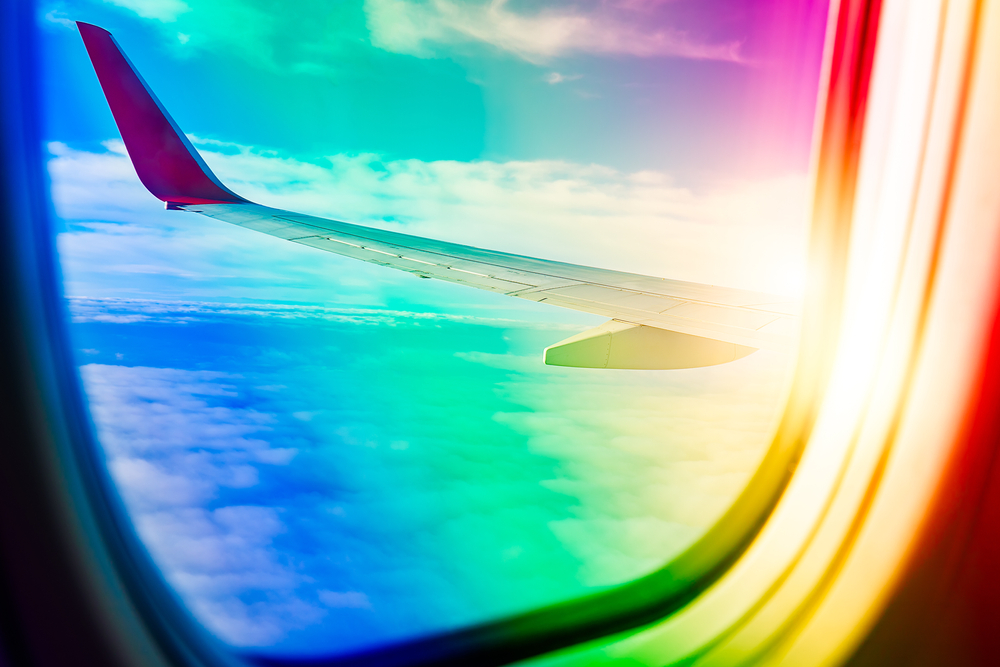
Exploring the world is a transformative experience, yet for LGBTQIA+ individuals, finding destinations where they feel safe and celebrated is crucial. As global attitudes evolve, more countries are becoming inclusive havens for queer travelers. Here’s a curated list of the top five LGBTQIA-friendly international travel destinations to consider for your next vacation .
Sydney, Australia: A nature lover’s paradise
Sydney is a dream for those who adore the great outdoors. With its stunning landscapes, vibrant nightlife, and welcoming beaches, Sydney is a city that celebrates the LGBTQIA+ community with open arms, especially during Pride Month and beyond.
Amsterdam, Netherlands: A cultural hub
Amsterdam’s reputation for diversity and inclusion is well earned. As the first country to legalize same-sex marriage, the Netherlands offers a rich cultural experience with its history, art, and grand Pride celebrations in July.
New Zealand: Scenic beauty and progressive politics
New Zealand might be a surprise entry on this list, but it’s a country that stands out for its LGBTQIA+ safety and historical milestones, like electing the first transgender mayor. With pleasant weather and attractions like the Bay of Islands, it’s a must-visit.
Iceland: Progressive policies and stunning views
Iceland is not just about breathtaking landscapes; it’s also a pioneer in queer rights, offering same-sex partnerships and gender-affirming care. Don’t miss out on the country’s nightlife and the famous Kiki Club.
Portugal: Architectural splendor and warm welcomes
Portugal’s allure lies in its stunning architecture, culture, and favorable climate. Cities like Porto and Lisbon are recommended by IGLTA for their LGBTQIA-friendly atmosphere.
Travel is a right that should be enjoyed by all, regardless of identity. Embrace new cultures and experiences by visiting these LGBTQIA-friendly destinations !
Sign up for Rolling Out news straight to your inbox.
- amsterdam , digital , Iceland , inclusive destinations , LGBTQIA+ travel , New Zealand , Portugal , Pride Month , queer travelers , Sydney

How to improve your kidney health

Understanding migraine symptoms and treatments
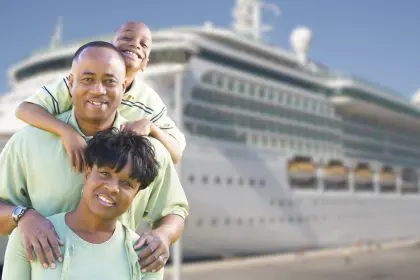
Carnival Cruise Line investment opportunity available for Black travelers

Why cocktails with a stranger can end badly when you’re lonely

Benefits of married women taking self-love classes

What landlords say behind renters’ backs
- More in Travel
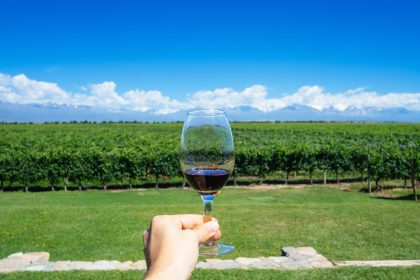
Indulge in the luxurious wine experiences of Argentina’s Mendoza region
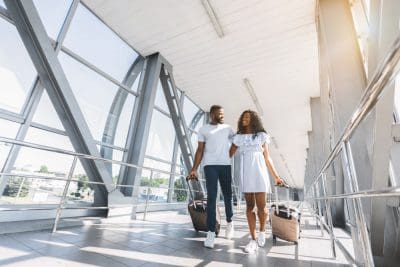
What you need to know about navigating airport security
- Community News
- Justice For All
- All Entertainment
- Reality Check
- All Culture
- Relationships
- Cocktail & Beer
- Creative Lens
- All Business
- Black Intellectuals
- Diversity Equity & Focus
- Sisters with Superpowers
- Home Ownership & Real Estate
- Entrepreneurs & Business Leaders
- Executive Suite
- Finance & Wealth
- Marketing & Branding
- Be the Match Atlanta
- Food & Nutrition
- Browse Places & Events
- HBCU Culture
- Privacy Policy
Change Location
Find awesome listings near you.
- Share full article

Stephen Hiltner/The New York Times
The sculpted facade of a 2,000-year-old tomb glows in the late-afternoon sun at Hegra, a UNESCO World Heritage site.
Crowds of Muslim pilgrims gather outside the Prophet’s Mosque in Medina.
Camels march through the desert on the outskirts of the Empty Quarter, the world’s largest sand sea.
For many years these Saudi Arabian scenes, including the lively open-air markets in Jeddah, were off limits to most travelers.
But not anymore. As it undergoes a profound transformation, Saudi Arabia is spending lavishly to lure tourists with its luxe new resorts ...
... its rich cultural heritage ...
... and its sublime natural beauty.
Can the Saudi government persuade would-be visitors to look past — or reconsider — its longstanding associations with religious extremism, ultraconservatism and human rights abuses?
Will the kingdom’s $800 billion bet on tourism pay off?
Supported by
Surprising, Unsettling, Surreal: Roaming Through Saudi Arabia
To witness the kingdom’s profound transformation and assess its ambitious tourism projects, a Times journalist spent a month on the road there. Here’s what he saw.

By Stephen Hiltner
An editor and photojournalist for the Travel section, Stephen Hiltner drove 5,200 miles and visited all 13 of Saudi Arabia’s provinces while reporting and shooting this story.
Wandering alone along the southern fringes of Saudi Arabia’s mountainous Asir Province, some eight miles from the Yemeni border, in a nondescript town with a prominent sculpture of a rifle balanced on an ornately painted plinth, I met a man, Nawab Khan, who was building a palace out of mud.
Listen to this article with reporter commentary
Actually, he was rebuilding the structure, restoring it. And when I came across him, he hadn’t yet begun his work for the day; he was seated on the side of the road beneath its red-and-white windows — cross-legged, on a rug, leaning over a pot of tea and a bowl of dates.
Two weeks earlier, on the far side of the country, a fellow traveler had pointed at a map and described the crumbling buildings here, in Dhahran al-Janub, arranged in a colorful open-air museum. Finding myself nearby, I’d detoured to have a look — and there was Mr. Khan, at first looking at me curiously and then waving me over to join him. Sensing my interest in the cluster of irregular towers, he stood up, produced a large key ring and began opening a series of padlocks. When he vanished through a doorway, I followed him into a shadowy stairwell.
This, of course, was my mother’s worst nightmare: Traveling solo, I’d been coaxed by a stranger into an unlit building in a remote Saudi village, within a volatile border area that the U.S. Department of State advises Americans to stay away from .
By now, though, more than halfway through a 5,200-mile road trip, I trusted Mr. Khan’s enthusiasm as a genuine expression of pride, not a ploy. All across Saudi Arabia, I’d seen countless projects being built, from simple museums to high-end resorts. These were the early fruits of an $800 billion investment in the travel sector, itself part of a much larger effort, Vision 2030 , to remake the kingdom and reduce its economic dependence on oil.
But I’d begun to see the building projects as something else, too: the striving of a country — long shrouded to most Westerners — to be seen, reconsidered, accepted. And with its doors suddenly flung open and the pandemic behind us, visitors like me were finally beginning to witness this new Saudi Arabia, much to Mr. Khan’s and all the other builders’ delight.

Few countries present as complicated a prospect for travelers as Saudi Arabia.
Long associated with Islamic extremism, human rights abuses and the oppression of women, the kingdom has made strides in recent years to refashion its society and its reputation abroad.
The infamous religious police, which upheld codes of conduct based on an ultraconservative interpretation of Islam, were stripped of their power. Public concerts, once banned, are now ubiquitous. Women have been granted new rights — including the freedom to drive and to travel without permission from a male guardian — and are no longer required to wear floor-length robes in public or to cover their hair.
These changes are part of a broad set of strategies to diversify the kingdom’s economy, elevate its status in the world and soften its image — the last of which is a tall order for a government that has killed a newspaper columnist , kidnapped and tortured dissidents , precipitated a humanitarian crisis in Yemen and imprisoned people for supporting gay rights , among a number of other recent abuses .
Central to the transformations led by 38-year-old Crown Prince Mohammed bin Salman, the kingdom’s de facto ruler, is a major push for international visitors. It represents a sea change in a country that, until 2019, issued no nonreligious tourist visas and instead catered almost exclusively to Muslim pilgrims visiting Mecca and Medina, Islam’s two holiest cities. In February, by contrast, my tourist e-visa was approved online in minutes.
Saudi Arabia has already transformed one of its premier destinations — Al-Ula, with its UNESCO-listed Nabatean tombs — from a neglected collection of archaeological sites into a lavish retreat with a bevy of activities on offer, including guided tours, wellness festivals, design exhibitions and hot air balloon rides.
Another project will create a vast array of luxury resorts on or near the Red Sea.
Still more projects include the development of Diriyah , the birthplace of the first Saudi state; the preservation and development of the coastal city of Jeddah ; an offshore theme park called the Rig ; and Neom , the futuristic city that has garnered the lion’s share of attention.
All told, the country is hoping to draw 70 million international tourists per year by 2030, with tourism contributing 10 percent of its gross domestic product. (In 2023, the country logged 27 million international tourists, according to government figures , with tourism contributing about 4 percent of G.D.P.)

At-Turaif, a UNESCO World Heritage site, was the birthplace of the kingdom of Saudi Arabia. It is now the centerpiece of the $63 billion Diriyah project, a new center of culture just outside Riyadh.
Nujuma, a Ritz-Carlton Reserve on a remote island in the Red Sea, opened in late May. (A one-bedroom villa costs about $2,500 per night, excluding taxes and fees.) It is one of 50 properties scheduled to open in the area by 2030.
The preservation and development of Jeddah, a coastal city famous for its historic district built largely from blocks of coral, comes with a price tag of some $20 billion.
Al-Ula is a cornerstone of Saudi Arabia’s tourism ambitions. Part of the city’s Old Town, long crumbling in neglect, has now been painstakingly restored.
To get a sense of these projects and the changes unfolding in Saudi society, I spent a month exploring the kingdom by car. I traveled alone, without a fixer, driver or translator. Per New York Times ethics guidelines, I declined the government’s many offers of discounts and complimentary services.
Much of the time I felt I’d been tossed the keys to the kingdom. But there were moments, too, when I faced a more complicated reality, one epitomized by a road sign that forced me to abruptly exit the highway some 15 miles from the center of Mecca. “Obligatory for Non Muslims,” it read, pointing to the offramp.
To me, the sign broadcast the lines being drawn to compartmentalize the country, which is now marketing itself to two sets of travelers with increasingly divergent — and sometimes contradictory — expectations: luxury tourists at ease with bikinis and cocktails, and pilgrims prepared for modesty and strict religious adherence. It’s hard to know whether the kingdom can satisfy both without antagonizing either.
My trip began in Jeddah, where, after spending two days exploring its historic district, I rented a car and drove eight hours north to Al-Ula, a benchmark for the new Saudi tourism initiatives.

Saudi Arabia
Reporter’s route
Dhahran al-Janub

Wadi al-Disah
Red Sea Resort
The name Al-Ula refers to both a small city and a broader region packed with attractions: Hegra , the kingdom’s first UNESCO World Heritage site and its biggest archaeological draw, is a 30-minute drive north of Old Town, a maze of crumbling mud-brick buildings now partly restored. Between the two, and fanning out to the east and west, are several other archaeological sites, as well as a smattering of resorts, event spaces and adventure outfitters. Farther northeast, beyond Hegra, is the Sharaan Nature Reserve , a vast protected zone used for conservation efforts.
My first priority during my five-day stay in Al-Ula was a visit to Hegra.
Like Petra , its better-known counterpart in Jordan, Hegra was built by the Nabateans, an ancient people who flourished 2,000 years ago. The site contains more than 100 tombs that were carved from solid rock, their entrances adorned with embellishments. Most impressive among them, set apart and standing some 70 feet tall, is a tomb colloquially called the Lonely Castle.
Not long ago, visitors could hire private guides and wander the area on foot, climbing in and out of — and no doubt damaging — the many tombs. Not anymore: I boarded an air-conditioned tour bus and zipped past most of them, stopping at just four locations.
At the penultimate stop, we exited the bus and trudged several hundred feet along a sandy path to the front of the Lonely Castle. Even in the late afternoon, the heat was stifling. I craned my neck to take in the details of the sculpted facade, which emerged like a mirage from one side of a massive boulder: its four pilasters, the rough chisel marks near the bottom, its characteristic five-stepped crown. Ten minutes evaporated, and I turned to find my group being shepherded back onto the bus. I jogged through the sand to catch up.
A few miles north of Hegra, I hopped in the back of a Toyota Land Cruiser — accompanied by an Italian graduate student and his mother — for a drive through the sandy expanse of the Sharaan Nature Reserve.
The scenery was sublime: Slipping through a narrow slot canyon, we emerged into a vast, open desert plain, then settled into a wide valley enclosed by an amphitheater of cliffs. Occasionally our guide stopped and led us on short hikes to petroglyphs, some pockmarked by bullet holes, or to lush fields of wildflowers, where he plucked edible greens and invited us to sample their lemony tang.
Gabriele Morelli, the graduate student, had first come to Al-Ula a few years ago — a different era, he said, given how quickly the place had transformed. He described a version that no longer exists, rife with cheap accommodation, lax rules and a free-for-all sensibility.
Some of the changes, of course, have been necessary to protect delicate ecosystems and archaeological sites from ever-growing crowds. But several people I met in Al-Ula — Saudis and foreigners alike — quietly lamented the extent of the high-end development and the steady erosion of affordability. Many of the new offerings, like the Banyan Tree resort, they pointed out, are luxury destinations that cater to wealthy travelers.
These hushed criticisms were among my early lessons on how difficult it can be to gauge the way Saudis feel about the pace and the pervasiveness of the transformations reshaping their society.
I got a taste of Al-Ula’s exclusivity — and of the uncanniness that occasionally surfaced throughout my trip — at a Lauryn Hill concert in an event space called Maraya . To reach the hall, I passed through a security gate, where an attendant scanned my e-ticket and directed me two miles up a winding road into the heart of the Ashar Valley, home to several high-end restaurants and resorts.
Rounding the final bend, I felt as if I’d stumbled into a computer-generated image: Ant-size humans were dwarfed by a reflective structure that both asserted itself and blended into the landscape. Inside, waiters served hors d’oeuvres and brightly colored mocktails to a chic young crowd.
The surreality peaked when, midway through the show, I left my plush seat to join some concertgoers near the stage — only to turn and see John Bolton, former President Donald J. Trump’s national security adviser, seated in the front row.
Where else, I wondered, could I attend a rap concert in the middle of the desert with a longtime fixture of the Republican Party — amid a crowd that cheered when Ms. Hill mentioned Palestine — but this strange new corner of Saudi Arabia?

The mirrored facade at Maraya, a vast event space in Al-Ula, warps and reflects the surrounding desert landscape.
The building is in some ways a precursor to the kingdom’s most ambitious architectural design: the project at Neom called the Line, a 106-mile linear city that will also feature a mirrored surface.
Lauryn Hill performing in front of a large crowd at Maraya.
After Al-Ula, I drove to another of the kingdom’s extravagant schemes: the Red Sea project, billed as the “world’s most ambitious regenerative tourism destination.” After weaving through a morass of construction-related traffic, I boarded a yacht — alongside a merry band of Saudi influencers — and was piloted some 15 miles to a remote island, where I disembarked in a world of unqualified opulence at the St. Regis Red Sea Resort .
I was chauffeured around in an electric golf cart — past 43 beachside “dune” villas and onto two long boardwalks that connect the rest of the resort to 47 “coral” villas, built on stilts over shallow turquoise water. Along the way, I listened to Lucas Julien-Vauzelle, an executive assistant manager, wax poetic about sustainability. “We take it to the next level,” he said, before rattling off a list of facts and figures: 100 percent renewable energy, a solar-powered 5G network , plans to enhance biologically diverse habitats.
By 2030, he said, the Red Sea project will offer 50 hotels across its island and inland sites. Citing the Maldives, he mentioned the kingdom’s plans to claim a share of the same high-end market.
Another prediction came by way of Keith Thornton, the director of restaurants, who said he expects the resort to legally serve alcohol by the end of the year. (While a liquor store for non-Muslim diplomats recently opened in Riyadh, the Saudi government has made no indication that it plans to reconsider its broader prohibition of alcohol.)
The hotel was undeniably impressive. But there’s an inescapable irony to a lavish resort built at unfathomable expense in the middle of the sea — with guests ferried out by chartered boat and seaplane — that flaunts its aspirations for sustainability.
Toward the end of my several-hour visit, I learned that every piece of vegetation, including 646 palm trees, had been transplanted from an off-site nursery. Later, reviewing historical satellite images, I found visual evidence that the island — described to me as pristine — had been dramatically fortified and, in the process, largely remade. Its footprint had also been significantly altered. It was, in a sense, an artificial island built where a smaller natural island once stood.
Something else struck me, too: The place was nearly empty, save for the staff and the Saudi influencers. Granted, the resort had just opened the month before — but the same was true at the nearby Six Senses Southern Dunes , an inland Red Sea resort that opened in November. Fredrik Blomqvist, the general manager there, told me that its isolated location in a serene expanse of desert — part of its appeal — also presented a challenge in drawing customers. “The biggest thing,” he said, “is to get the message out that the country is open.”
Since the country began issuing tourist visas, influencers have been documenting their experiences in places like Jeddah and Al-Ula, their trips often paid for by the Saudi government. Their breezy content contributes to the impression that the kingdom is awaiting discovery by foreign visitors with out-of-date prejudices. To an extent, for a certain segment of tourists, that’s true.
For many travelers, though, the depiction of the kingdom as an uncomplicated getaway could be dangerously misleading.
Speech in Saudi Arabia is strictly limited; dissent is not tolerated — nor is the open practice of any religion other than the government’s interpretation of Islam. In its travel advisory , the U.S. Department of State warns that “social media commentary — including past comments — which Saudi authorities may deem critical, offensive, or disruptive to public order, could lead to arrest.” Punishment for Saudi nationals has been far worse: In 2023, a retired teacher was sentenced to death after he criticized the ruling family via anonymous accounts. As of late 2023, he remained in prison.
Other restrictions are harder to parse. L.G.B.T.Q. travelers are officially welcome in the kingdom but face a conundrum: They might face arrest or other criminal penalties for openly expressing their sexual orientation or gender identity. As recently as 2021, an independent U.S. federal agency included Saudi Arabia on a list of countries where same-sex relationships are punishable by death , noting that “the government has not sought this penalty in recent years.”
When asked how he would convince a same-sex couple that it was safe to visit, Jerry Inzerillo, a native New Yorker and the group chief executive of Diriyah, said: “We don’t ask you any questions when you come into the country or when you leave.”
“Maybe that’s not conclusive enough,” he added, “but a lot of people have come.”
Female travelers might also face difficulties, since advancements in women’s rights are not equally distributed throughout the kingdom.
The changes were more visible in big cities and tourist centers. Ghydda Tariq, an assistant marketing manager in Al-Ula, described how new professional opportunities had emerged for her in recent years. Maysoon, a young woman I met in Jeddah, made extra money by occasionally driving for Uber. Haneen Alqadi, an employee at the St. Regis Red Sea, described how women there are free to wear bikinis without fear of repercussions.
Outside such places, though, I sometimes went for days without seeing more than a handful of women, invariably wearing niqabs, let alone seeing them engaged in public life or tourism. My photographs reflect that imbalance.
As an easily identifiable Western man, I moved through the country with an array of advantages: the kindness and cheery curiosity of strangers, the ease of passage at military checkpoints, and the freedom to interact with a male-dominated society at markets, museums, parks, restaurants, cafes. Not all travelers could expect the same treatment.
Roaming in the far north and south, I often found the earlier version of the kingdom — with lax rules and less development — that had been described to me in Al-Ula.
I trekked to the northern city of Sakaka to see an archaeological site promoted as the Stonehenge of Saudi Arabia: a set of monoliths called the Rajajil Columns thought to have been erected some 6,000 years ago but about which little is definitively known.
My heart sank when I pulled into the parking lot after a five-hour drive and found the columns blocked by a tall fence. Approaching on foot, though, I noticed that a section of the fence had been peeled back and that visitors were wandering freely among the stones, which protruded from the earth like isolated clusters of crooked teeth. I joined the small crowd, if hesitatingly, and was surprised to find no footpaths, nor anything to keep us a safe distance from the columns. In the end I wondered if our access had been officially approved or informally arranged.
My travel experiences were sometimes awkward in other ways, too.
Standing just outside the grounds of the central mosque in Medina, where the Prophet Muhammad is buried, I was detained by a stern member of the Special Forces. (Even after 2019, non-Muslim tourists remained barred from Mecca and Medina, Islam’s two holiest cities. The ban was relaxed in parts of Medina in 2021.)
The guard interrogated me and, after calling a colleague to confer, demanded that I leave the area. “Go,” he said threateningly. Another traveler who witnessed the encounter scurried away to avoid a similar fate.
The unsettling exchange cast a pall over my time in the city, which few non-Muslims have seen. As far as I knew, I’d abided by the rules by staying outside the grounds of the Prophet’s Mosque — a boundary line that I’d confirmed with tourism officials beforehand.

Peering through the perimeter fence — the boundary line for non-Muslims — at the Prophet’s Mosque in Medina.
The Mosque of Al-Ghamamah, one of the oldest in the holy city.
A sprawling maze of ramshackle residential buildings sits less than a mile from the Prophet’s Mosque.
A guide speaking to a group of visitors near the Hejaz Railway Museum, visible in the distance. (The museum was closed for renovations at the time.)
A group of young men, most of whose families emigrated from Sudan, playing soccer in a field just outside the center of Medina.
More than anything, family and friends wanted to know if I felt safe on my trip — and I did, almost without exception. Petty crime in Saudi Arabia is exceedingly rare. And while parts of the country are under a Level 4 “Do Not Travel” advisory , even my rambling itinerary was approved by a security expert.
Instead of fearing for my safety, I was often preoccupied with how I’d fairly portray a place that elicited such a range of conflicting emotions: joy and distress, excitement and apprehension, sincerity and doubt. So much lay hidden from public view — like the collective anguish over the war raging in Gaza . And so little was easy to categorize, in part because the warmth of everyday Saudis was strikingly at odds with the ruthlessness of their authoritarian government.
In Riyadh, a young man warned me not to speak openly with strangers. “People get arrested here for a tweet ,” he said. “Can you imagine?”
I could, actually. The Saudi columnist Jamal Khashoggi had chronicled his government’s increasingly draconian responses to criticism. “Repression and intimidation are not — and never should be — the acceptable companions of reform,” he wrote in The Washington Post in 2018, just months before he was killed and dismembered at his country’s consulate in Istanbul.

Were we to travel only where we feel comfortable and unchallenged, we’d all be poorer for it. But the question of whether to travel to Saudi Arabia is thornier than that.
It’s easy to see one response, “No,” as yielding to closed-mindedness at the expense of ordinary people — like the kindly vendor Abdullah, who served me local honey at his shop in the southern mountains.
But it’s easy, too, to see “Yes” as an affirmation that might makes right, that amusement outweighs morality, that princely wealth can wipe a stained slate clean.

Sunrise over the mountainous village of Fayfa, some six miles from the Yemeni border.
Abdullah Ghaleb Zaid, a honey vendor, at his shop atop a mountain pass near the southern city of Abha.
Sunset near Jabal Soudah, the kingdom’s highest peak.
Ten days into my trip, I ventured to Wadi al-Disah, a steep-walled valley where I’d booked a tent at a campsite I found on Airbnb. For an additional 300 riyals ($80), my host, Faisal, led me on a four-wheel-drive tour, departing the paved road and weaving through a path along the bed of an ephemeral river. Continually jolted by the uneven terrain, we eased past thick reeds, lofty palms and small bands of visitors who’d nestled into clearings.
As we left, I met a group of young men gathered for a picnic, their sandals scattered around a carpet on which they were preparing their dinner. Delighted to meet an American with a camera, they asked if I’d take a group portrait, then exchanged information with me so I could send them a copy — a scenario by then so familiar that I hardly thought anything of it.
A full day later, some 200 miles away, I was cruising along a lonely highway near the Jordanian border when a Land Cruiser blew past me at an astonishing speed. I felt my compact car rock from its turbulence — and then I watched with a twinge of dread as the car abruptly braked, slowing hard in the left lane until our front ends were aligned. It held steady there.
For a moment I stared straight ahead, hoping to avoid a confrontation. When I finally turned to look, I saw a group of boys grinning wildly and waving through an open window. Then I realized: Improbably, it was three of the young men I’d met the day before. Somehow we’d all followed the same route. And somehow, in the split second it took them to fly past, they’d recognized me. I lifted my camera from the passenger seat and snapped a photograph.
The picture shows three young Saudis on a precipice: endearing, erratic, captivating. I have a sense of where they came from but no certainty about where they’re going. Two are flashing peace signs, and none appears to be wearing a seatbelt. No one is watching the road as their car drifts out of its lane, careening a little recklessly into a hopeful and uncertain future.
Stephen Hiltner’s recent work includes a photo essay about his childhood in Budapest , an examination of A.I.-generated guidebooks and an investigation into the deaths of Russian soldiers in Ukraine . You can follow his travels on Instagram .
Got a question about this story? Drop a note in the comments section. Got a tip? Send him an email .
Read by Stephen Hiltner
Audio produced by Jack D’Isidoro .
Stephen Hiltner is an editor, writer and photographer for the Travel section of The Times. More about Stephen Hiltner
Open Up Your World
Considering a trip, or just some armchair traveling here are some ideas..
52 Places: Why do we travel? For food, culture, adventure, natural beauty? Our 2024 list has all those elements, and more .
The Alaska Highway: On an epic road trip, a family plots a course from Alaska to the Lower 48, passing through some of Canada’s most spectacular scenery .
Minorca: Spend 36 hours on this slow-paced Spanish island , which offers a quieter and wilder retreat than its more touristy neighbors.
Japan: A new high-speed train stop unlocks Kaga, a destination for hot springs, nourishing food and traditional crafts , as an easy-to-reach getaway from Tokyo.
London: The Victoria and Albert Museum is a treasure trove of art and design. Here’s one besotted visitor’s plan for taking it all in .
Advertisement

Couple donates ‘transformative’ $14 million of art to Figge
DAVENPORT, Iowa (KWQC) - A Davenport couple has donated $14 million worth of art to the Figge Art Museum.
The Figge Art Museum said they’ve established The Linda and J. Randolph Lewis Wing after Randy and Linda Lewis of Davenport donated 44 works of modern and contemporary American art valued at $14 million by Christie’s in New York.
“The museum was really founded on the spirit of philanthropy, if you go back to 1925, and Charles A Ficke, he felt strongly that we’re able to enjoy the benefits of today based on the gifts people made, who came before us. And it was in that spirit that the Lewises were collecting and decided that this was their way to give to the future to our community,” said Melissa Mohr, Figge Interim Executive Director.
The Lewises have collected works for a half-century, according to a news release from the museum from artists such as Romare Bearden, Milton Avery, Marsden Hartley, Helen Frankenthaler and Alice Neel.
“These are artists who are innovating, they’re experimenting, they’re really pushing the boundary, pushing the boundaries on what creativity is, they’re responding to artists who have come before them,” said Mohr.
Mohr says the impact of this gift “cannot be overstated.
“We’re thinking about the role that these artworks will play for the next 100 years and beyond. Our curators are already busy at work, creating a very thoughtful plan that makes sure that we are we’re thinking comprehensively about the narrative that we’re putting out there. We’re thinking about various opportunities programmatically, that we can offer to the community so that they can engage with the works in a way that’s personally meaningful to them.”
The Linda and J. Randolph Lewis Wing will stand as a cornerstone of the Figge’s mission to bring art and people together, fostering creativity and cultural understanding, and inspiring dialogue. This is indeed a transformative moment for the Figge Art Museum and for the broader cultural landscape of the Quad Cities.”
The Lewises said that throughout the 36 years they’ve lived in the Quad Cities the community has been very good to them.
“It just seems easy to do this, and to know that people will enjoy it, and that it will be here for a long time. When you are nearing the end of your life — and we are — you start to think about what you’re leaving behind, what of value you have to leave future generations. It makes us feel good to give back to the community,” they said.
The Lewises’ collection marks a significant milestone for the Figge Art Museum, Mohr explained that while the museum’s current collection is strong in areas like Regionalism, Spanish Colonial art and Haitian art, the Lewises donation will fill crucial gaps in its galleries.
“It will fill a gap that that existed around American modern and contemporary works. And it’s gonna allow us to really share a more comprehensive narrative of that time period.”
Inspired by the philanthropic legacies of Dr. Walter Neiswanger and Charles A. Ficke, the Lewises said they hope to encourage other collectors to consider how their collections might benefit their communities and future generations.
The museum said visitors will have the opportunity to view pieces from the Lewis Collection in the newly dedicated Linda and J. Randolph Lewis Wing on the second floor.

From Tactical Gear to Travel Essentials: The Duravo Evolution
The journey of Duravo from tactical gear to a trendsetter in the travel essentials market is a story of innovation and transformation. Founders Matt Muhr and Dan Cooper initially collaborated on developing high-performance gear for military and sports applications.
Wilmington, DE - June 12, 2024 —
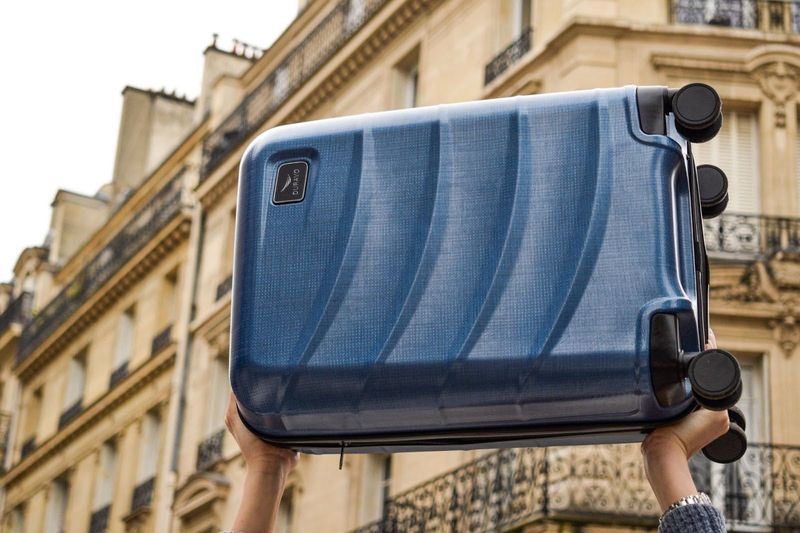
The journey of Duravo from tactical gear to a trendsetter in the travel essentials market is a story of innovation and transformation. Founders Matt Muhr and Dan Cooper initially collaborated on developing high-performance gear for military and sports applications. However, their encounter with a German-engineered material called Flexshell™ altered their course toward travel gear. Flexshell, a self-reinforced composite made in the same German factory as the famous Curv® composite used in professional sports and military equipment, provides remarkable durability and lightness, making it an ideal candidate for luggage.
"Initially, we focused solely on durability and performance under extreme conditions. Flexshell brought those benefits along with a unique material surface aesthetic, changing how we approached luggage design," explains Muhr.
Duravo's unique position in the market today stems from this pivot—integrating the ruggedness of tactical gear with the aesthetics and functionality demanded by modern travelers.
Sustainability Meets Design
Duravo's commitment to environmentally friendly practices stands out as consumers become more conscious of sustainable products. Flexshell's manufacturing process involves no solvents, volatile organic compounds (VOCs), plasticizers, per- and polyfluoroalkyl substances (PFAS), BPAs, or halogenated compounds, making it not only strong but also recyclable. Duravo's implementation is notably thorough, extending from material selection to product lifecycle.
"Our aim was not just to create another suitcase but to set a new standard for what travel gear can be," states Cooper. This sentiment is evident in the design of their flagship product, the Duravo International Expandable Carry-on, which combines lightweight construction with expansive functionality, allowing travelers to adapt to varying trip demands without sacrificing comfort or environmental considerations.
Practical Features of Modern Luggage
In addition to the use of Flexshell, Duravo's line of luggage incorporates several features designed to meet the needs of today's travelers. Notably, the suitcases are equipped with USB ports, which are becoming increasingly common in modern luggage. These ports allow passengers to charge devices directly from their bags (using their own power source which can be removed for airline check-in), which is particularly useful for those needing to power their electronic devices during long travel days.
The design also emphasizes ease of movement and organization. Ergonomic handles and multi-directional wheels ensure that the suitcases can be maneuvered easily through busy airports and narrow airplane aisles. Internally, the luggage offers well-thought-out compartmentalization. Specialized pockets for laptops, tablets, and other electronic accessories such as Apple Airtag tracking devices help travelers keep their items organized and accessible.
The use of Flexshell material in constructing these suitcases contributes to their lightweight profile while enhancing their durability and protection against physical impacts, a common concern for frequent travelers. This combination of functionality and durability reflects an understanding of the practical challenges faced by modern travelers.
Industry Impact and Consumer Reception
Since its inception, Duravo has made a name for itself in the highly competitive luggage industry by focusing on innovation and customer needs. According to market data, the global luggage market is expected to grow more in the coming years. Innovations like those introduced by Duravo are pivotal in driving this growth by meeting the evolving demands of modern consumers who prioritize durability, style, and sustainability.
Duravo has also explored the tactical aspect of the Flexshell material by introducing anti-ballistic backpacks. These backpacks not only are stylish and well organized, they offer NIJ Level 3A ballistics protection.The unique combination of an aramid fiber anti-ballistics layer plus the Duravo Flexshell impact-absorbing backpanel provides handgun ballistics protection and minimizes trauma from impact.
With this unique protection system, you still get lightweight protection of your gear along with thoughtfully designed compartments and our signature side-access laptop storage. The Venture Antiballistic Backpack gives you piece of mind whether you are heading to the office, university or a travel destination.
Contact Info: Name: Nicole G. Email: Send Email Organization: Duravo Luggage Website: https://duravo.com/
Release ID: 89132579
Should you come across any errors, concerns, or inconsistencies within this press release's content, we urge you to reach out without delay by contacting [email protected] (it is important to note that this email is the authorized channel for such matters, sending multiple emails to multiple addresses does not necessarily help expedite your request). Our committed team will promptly address your feedback within 8 hours and take appropriate measures to resolve any identified issues or guide you through the removal process. Providing accurate and dependable information remains our utmost priority.

Redefining Today's Chinese Luxury Travelers: Marriott International Study Reveals Digital Journey and Experiential Luxury Crucial for Travel Choices in 2024

In collaboration with leading media platform Jing Daily, Marriott International unveils an in-depth report shedding light on the evolving landscape of luxury travel in China. Titled “Luxury Explored: Chinese Luxury Travelers’ Evolving Desires,” the report delves deep into the transformative trends and shifting preferences shaping the Chinese luxury travel market.
“Understanding the evolving desires of Chinese luxury travelers is paramount for us to continue delivering exceptional experiences that resonate with our guests,” said Bart Buiring, Managing Director, Luxury, Greater China, Marriott International . “The findings in this report reaffirm our commitment to champion innovation, authenticity, and personalized service, ensuring that we remain at the forefront of China's dynamic luxury travel market.”
The report offers a comprehensive overview of the Chinese luxury travel segment, highlighting its exponential growth trajectory fueled by rising affluence, increased discretionary spending power, and a burgeoning middle class. From opulent vacations in exotic locales to bespoke experiences curated for discerning tastes, luxury travel in China has evolved into a nuanced pursuit of exclusivity, authenticity, and cultural immersion.
Marriott International Luxury Group, with its portfolio of eight dynamic luxury brands, is at the forefront of catering to the evolving desires of today's discerning luxury travelers. Luxury Group's approach to luxury emphasizes creating highly contextualized, unique brand experiences that resonate with modern travelers’ quest for exclusivity and personal growth.
Factors Influencing the Change in the Chinese Luxury Travel Market Several factors have contributed to the transformation of the Chinese luxury travel market, including changing attitudes towards luxury consumption, the proliferation of digital platforms and social media, and the emergence of experiential luxury. Bain’s latest China luxury report forecasts robust growth in the luxury market, with Chinese consumers increasingly returning to purchasing luxury within China.
Key Findings from the Report
- Attitude Shifts: Mature travelers prioritize exclusivity, while the young generation seeks uniqueness. Young generation is drawn to quiet luxury and niche brands that resonate with their identity. Additionally, their preferences are shifting towards community-based experiences and global connections, with less emphasis on social interaction among mature luxury travelers in China.
- Digital Influence: The proliferation of digital platforms and social media has shaped consumer perceptions and driven demand for unique, Instagram-worthy experiences. Chinese travelers, often called "digital natives", rely heavily on online reviews, recommendations, and social media influencers to inform their travel decisions.
- Experiential Luxury: Affluent Chinese travelers seek meaningful encounters that foster cultural exchange, intellectual stimulation, and spiritual rejuvenation. Luxury travel is no longer just about opulence; it is about creating memorable experiences that leave a lasting impression.
Perspective on Future Growth As the Chinese luxury travel market evolves, opportunities arise for stakeholders across the travel industry to capitalize on this burgeoning demand. By embracing a holistic approach to luxury travel that emphasizes sustainability, wellness, and experiential enrichment, businesses can forge deeper connections and foster brand loyalty in an increasingly competitive market landscape.
The evolving desires of Chinese luxury travelers underscore the dynamism and adaptability of the global luxury travel industry. By understanding Chinese travelers’ nuanced motivations and aspirations, stakeholders can unlock the full potential of this growing market segment. Embracing innovation, fostering collaboration, and prioritizing authenticity are key to shaping China's future of luxury travel.
For more information on the report, please visit here .
About Marriott International Marriott International, Inc. (Nasdaq: MAR) is based in Bethesda, Maryland, USA, and encompasses a portfolio of nearly 8,900 properties across more than 30 leading brands in 141 countries and territories. Marriott operates and franchises hotels and licenses vacation ownership resorts all around the world. The company offers Marriott Bonvoy ® , its highly awarded travel program. For more information, please visit our website at www.marriott.com . In addition, connect with us on Facebook and @MarriottIntl on X and Instagram .
About Marriott International Luxury Portfolio With an unrivaled portfolio of eight dynamic luxury brands, Marriott International is creating authentic, rare, and enriching experiences sought by today’s global luxurian. Spanning all corners of the world, Marriott International’s luxury brands group offers a boundless network of more than 500 landmark hotels and resorts in 70 countries and territories through The Ritz-Carlton, Ritz-Carlton Reserve, Bvlgari Hotels & Resorts, St. Regis Hotels & Resorts, EDITION, The Luxury Collection, JW Marriott, and W Hotels. From the world’s most iconic destinations to the ultimate undiscovered gems, the international hospitality leader’s collection of luxury brands is focused on elevating travel with highly contextualized, nuanced brand experiences that signal the future of luxury by allowing guests to indulge their passions while sparking personal growth.
About Marriott Bonvoy ® Marriott Bonvoy’s extraordinary portfolio offers renowned hospitality in the most memorable destinations in the world, with more than 30 brands that are tailored to every type of journey. From The Ritz-Carlton and St. Regis to W Hotels and more, Marriott Bonvoy has more luxury offerings than any other travel program. Members can earn points for stays at hotels and resorts, including all-inclusive resorts and premium home rentals, and through everyday purchases with co-branded credit cards. Members can redeem their points for experiences including future stays, Marriott Bonvoy Moments™, or through partners for luxurious products from Marriott Bonvoy Boutiques®. To enroll for free or for more information about Marriott Bonvoy, visit marriottbonvoy.com .
Media Contact [email protected]

Expedia Rewards is now One Key™
Elektrostal, visit elektrostal, check elektrostal hotel availability, popular places to visit.
- Electrostal History and Art Museum
You can spend time exploring the galleries in Electrostal History and Art Museum in Elektrostal. Take in the museums while you're in the area.
- Cities near Elektrostal

- Places of interest
- Yuri Gagarin Cosmonaut Training Center
- Central Museum of the Air Forces at Monino
- Peter the Great Military Academy
- History of Russian Scarfs and Shawls Museum
- Ramenskii History and Art Museum
- Bykovo Manor
- Pekhorka Park
- Balashikha Arena
- Malenky Puppet Theater
- Drama Theatre BOOM
- Balashikha Museum of History and Local Lore
- Pavlovsky Posad Museum of Art and History
- Saturn Stadium
- Church of Vladimir
- Likino Dulevo Museum of Local Lore
- Orekhovo Zuevsky City Exhibition Hall
- Noginsk Museum and Exhibition Center
- Fairy Tale Children's Model Puppet Theater
- Fifth House Gallery
- Malakhovka Museum of History and Culture
Elektrostal, Russia
Essential elektrostal.

Elektrostal Is Great For
Eat & drink.

- Apelsin Hotel
- Elektrostal Hotel
- Apart Hotel Yantar
- Mini Hotel Banifatsiy
- Restaurant Globus
- Amsterdam Moments
- Cafe Antresole
- Viki Cinema
- Statue of Lenin
- Park of Culture and Leisure
TGI Fridays may have found a surprising solution to its struggling business
- TGI Fridays has struggled recently, closing dozens of restaurants earlier this year.
- But the company said it's seeing new success at "travel- and tourism-focused destinations."
- A TGI Fridays opened at a hotel in Holywood this week and an airport location is one of its busiest.

TGI Fridays says it is leaning into the travel industry to regain its footing with American diners.
The casual dining chain announced this week that it opened a new restaurant inside the Hilton Garden Inn in Hollywood. That might not seem revelatory on the surface, but the company called the new hotel-based restaurant "core to the brand's transformation strategy."
TGI Fridays has struggled to remain relevant with its domestic consumers in recent years. The chain suffered an 18% decline in domestic systemwide sales in 2023, The Dallas Morning News reported. And it closed 36 "underperforming" restaurants earlier this year.
Related stories
The company now hopes focusing on the travel industry can turn things around.
"The new restaurant opening comes as TGI Fridays continues to see dominance across travel- and tourism-focused destinations, including airports, hotels, and casinos," the press release said.
TGI Fridays referenced the Dallas Fort Worth International Airport, where it opened a newly renovated restaurant in July last year. That location is on track to become the "highest volume sales location of any US airport restaurant," the company says.
The chief development officer at TGI Fridays said the success presents a tangible opportunity for growth.
"Whether domestic or international, leisure or business, we're seeing travelers gravitate to the familiar comfort of the beloved and iconic Fridays brand while they're on the road and away from home," Chris Devlin said in the press release.
There are almost 600 TGI Fridays restaurants across the globe.
TGI Fridays has undergone several leadership changes since May 2023, when Ray Blanchette stepped down as CEO. Brandon Coleman III took over the position that August but resigned and was replaced by Weldon Spangler in November 2023.
Watch: 5 ways Elon Musk shook up Twitter as CEO
- Main content
- Yekaterinburg
- Novosibirsk
- Vladivostok

- Tours to Russia
- Practicalities
- Russia in Lists
Rusmania • Deep into Russia
Out of the Centre
Savvino-storozhevsky monastery and museum.

Zvenigorod's most famous sight is the Savvino-Storozhevsky Monastery, which was founded in 1398 by the monk Savva from the Troitse-Sergieva Lavra, at the invitation and with the support of Prince Yury Dmitrievich of Zvenigorod. Savva was later canonised as St Sabbas (Savva) of Storozhev. The monastery late flourished under the reign of Tsar Alexis, who chose the monastery as his family church and often went on pilgrimage there and made lots of donations to it. Most of the monastery’s buildings date from this time. The monastery is heavily fortified with thick walls and six towers, the most impressive of which is the Krasny Tower which also serves as the eastern entrance. The monastery was closed in 1918 and only reopened in 1995. In 1998 Patriarch Alexius II took part in a service to return the relics of St Sabbas to the monastery. Today the monastery has the status of a stauropegic monastery, which is second in status to a lavra. In addition to being a working monastery, it also holds the Zvenigorod Historical, Architectural and Art Museum.
Belfry and Neighbouring Churches

Located near the main entrance is the monastery's belfry which is perhaps the calling card of the monastery due to its uniqueness. It was built in the 1650s and the St Sergius of Radonezh’s Church was opened on the middle tier in the mid-17th century, although it was originally dedicated to the Trinity. The belfry's 35-tonne Great Bladgovestny Bell fell in 1941 and was only restored and returned in 2003. Attached to the belfry is a large refectory and the Transfiguration Church, both of which were built on the orders of Tsar Alexis in the 1650s.

To the left of the belfry is another, smaller, refectory which is attached to the Trinity Gate-Church, which was also constructed in the 1650s on the orders of Tsar Alexis who made it his own family church. The church is elaborately decorated with colourful trims and underneath the archway is a beautiful 19th century fresco.
Nativity of Virgin Mary Cathedral

The Nativity of Virgin Mary Cathedral is the oldest building in the monastery and among the oldest buildings in the Moscow Region. It was built between 1404 and 1405 during the lifetime of St Sabbas and using the funds of Prince Yury of Zvenigorod. The white-stone cathedral is a standard four-pillar design with a single golden dome. After the death of St Sabbas he was interred in the cathedral and a new altar dedicated to him was added.

Under the reign of Tsar Alexis the cathedral was decorated with frescoes by Stepan Ryazanets, some of which remain today. Tsar Alexis also presented the cathedral with a five-tier iconostasis, the top row of icons have been preserved.
Tsaritsa's Chambers

The Nativity of Virgin Mary Cathedral is located between the Tsaritsa's Chambers of the left and the Palace of Tsar Alexis on the right. The Tsaritsa's Chambers were built in the mid-17th century for the wife of Tsar Alexey - Tsaritsa Maria Ilinichna Miloskavskaya. The design of the building is influenced by the ancient Russian architectural style. Is prettier than the Tsar's chambers opposite, being red in colour with elaborately decorated window frames and entrance.

At present the Tsaritsa's Chambers houses the Zvenigorod Historical, Architectural and Art Museum. Among its displays is an accurate recreation of the interior of a noble lady's chambers including furniture, decorations and a decorated tiled oven, and an exhibition on the history of Zvenigorod and the monastery.
Palace of Tsar Alexis

The Palace of Tsar Alexis was built in the 1650s and is now one of the best surviving examples of non-religious architecture of that era. It was built especially for Tsar Alexis who often visited the monastery on religious pilgrimages. Its most striking feature is its pretty row of nine chimney spouts which resemble towers.

Plan your next trip to Russia
Ready-to-book tours.
Your holiday in Russia starts here. Choose and book your tour to Russia.
REQUEST A CUSTOMISED TRIP
Looking for something unique? Create the trip of your dreams with the help of our experts.
Operational efficiency: A clear path to outperformance in distribution
Many distributors are finding it difficult to grow revenues and maintain margins while meeting the rising expectations of customers. Hiring and retention challenges, sharp demand variability, uncertain supply lead times, shortages, and inflationary pressures may seem like the new normal.
But opportunities abound for those who know where to look: distributors can meaningfully improve operational excellence to create more value for shareholders, customers, and suppliers.
In our inaugural survey of operations leaders in more than 80 North American distributors across more than a dozen subsectors, we identified many operations shortfalls—along with improvements that are helping about one in ten distributors outperform the industry by wide margins. Since 2019, these “transformers” have improved returns on invested capital by almost 30 percent and revenues by an average of almost 9 percent annually, boosted profits by around five percentage points, and expanded EBITDA margins by nearly seven percentage points. 1 For more on outperformance in distribution, see “ Lessons from transformers: How some distributors reset and won ,” McKinsey, February 21, 2023.
Distribution leaders recognize that operational excellence can be a promising path to profitable growth in these uncertain times. In this article, we outline the steps leading distributors are taking in operations to overcome their toughest challenges—and prepare for new ones.
The labor market has eased overall but is still a top concern
Labor shortages have eased since the pandemic, but more than a fifth of survey respondents still consider worker turnover their biggest operational gap (Exhibit 1). Labor mismatches are unlikely to fully dissipate on their own due to structural shifts such as early retirements and relocations. As one operations executive at an electronics distributor told us, “Prepandemic labor for warehousing and transportation was tight, and during the pandemic it became absurdly hard to recruit and retain people from the front line all the way to senior VP level. The situation is cooling, but labor is still a top priority.” Many distributors continue to face difficulties recruiting in select regions or for specific roles, such as commercial drivers and warehouse workers.
Nearly all respondents said they were hiring externally to meet talent needs, and most are offering more compensation or other benefits (Exhibit 2). But barely four in ten are helping current employees master new skills. Those companies that are upskilling may be gaining an edge: training can boost organizational agility in a more volatile marketplace, and career development and advancement can reduce turnover because they matter more to workers today. 2 For more on the changing needs of workers, please see Ela Chodyniecka, Aaron De Smet, Bonnie Dowling, and Marino Mugayar-Baldocchi, “ Money can’t buy your employees’ loyalty ,” McKinsey, March 28, 2022.
In conversations, leaders discussed a wide range of approaches they are taking to improve operations and the employee experience. An operations leader at a building supplies distributor credited his company’s lean operations system with giving workers more control over how they do their work and increasing their job satisfaction. He added that targeted infrastructure improvements, such as remodeling the break room and improving the air-conditioning system, increased retention. A food service distributor has introduced more flexible schedules, including a part-time work option, five eight-hour shift options, four ten-hour shift options, and extended operating hours to accommodate more flexible schedules. Another operations executive has made equipment and operations bilingual, expanding the pool of potential talent to include Spanish speakers. Some distributors are also employing flexible labor, such as contract workers, to plug labor gaps. While these workers can be more expensive, they’re not as costly as productivity losses or declines in service levels caused by staffing shortfalls.
Many distributors continue to face difficulties recruiting in select regions or for specific roles, such as commercial drivers and warehouse workers.
Technology is also playing a much larger role in retention. We spoke with leaders at a distribution company who used advanced analytics to understand what was driving attrition. Based on what they learned, they redesigned the daily routines of frontline roles. Improvements included more accurate delivery scheduling that reduced driver idle time, along with significant reductions in downtime and overstaffing in distribution centers. Retention rose by approximately 15 percent.
Low digital adoption has slowed the pace of operational improvement
By definition, every big distributor is a master of complexity—it may source, stock, price, and distribute half a million SKUs to meet customers’ needs—but many leaders have yet to harness basic digital tools, such as planning processes or systems, to manage that complexity. As one auto parts distribution executive put it, “Compared to our peers, we rank at six or seven out of ten on digital capabilities, but the industry as a whole is 20 years behind.” Some distributors are discouraged by the costs of purchasing, ROI, and building on legacy systems, but evolving software-as-a-service offerings are changing the equation and presenting an opportunity to leapfrog digital solutions. The time for upgrades has arrived.
Nearly half of our respondents said they had not invested in core building blocks of digital supply chain consistently across their networks, such as advanced planning systems (APS), warehouse management systems (WMS), or transportation management systems (TMS). About 14 percent still rely on manual spreadsheets for planning, while other sectors, from retail to advanced industries, are driving operational efficiency by using APS in pursuit of autonomous planning. Half of respondents have no warehouse robotics or automation—and no plans to adopt them (Exhibit 3).
Almost half of survey respondents said they had accelerated their implementation of advanced analytics to respond to recent supply chain challenges, but progress has been difficult in many cases—data scattered across different systems is the most common pain point. Other challenges include perceived high investment costs and slow implementation and adoption, with steep learning curves, across acquired subsidiaries. One senior leader in the chemicals sector told us that some software had been “home runs” in terms of value, some had not met expectations, and some had simply never been used.
Inventory and network strategies are increasingly important in today’s more volatile marketplace
As supply constraints ease, more distributors are getting back to basics, such as improving the customer experience. Their success will depend heavily on strategies that make inventory available across networks in more efficient ways, particularly for traditional distributors aiming to provide high service levels to retain high margins. Many distributors are building capacity to stay closer to customers, for example, by offering larger selections of SKUs and exceeding service-level expectations to boost customer acquisition and retention.
More than six in ten survey respondents say they have reassessed inventory strategy to maintain higher service levels, including faster deliveries and higher fill rates, and now hold larger stocks of critical SKUs. Many are finding ways to expand warehouse capacity to accommodate a larger and wider selection of inventory. In fact, nearly a third of survey respondents expect to make major investments in capacity and automation in the next three to five years—roughly the same share as those who anticipate investments in digital (Exhibit 4). Some operations leaders are getting more value from the space they already have, such as by investing in retrieval systems that maximize the use of vertical space per square foot. As distributors focus on driving growth, network strategy will play an increasingly critical role, especially as revenues continue to shift to online channels and e-commerce.
Recent disruptions revealed the high costs of complex organization design
The ability to make the right decisions quickly in response to changing market conditions is more important than ever as major disruptions become more frequent. But we find that many distributors become less agile as they grow—for example by adopting inconsistent systems and processes in different areas of their business. This is particularly the case for those who rely heavily on M&A to bolster the top line but don’t fully integrate the companies they acquire.
Without standard tools and approaches to make organization-wide decisions and gain synergies, distributors are likely to miss opportunities to drive sourcing efficiency, optimize pricing, and respond quickly to shifting customer demand. They also tend to spend more on multiple solutions that do not integrate well with one another. A leader in energy and mining equipment distribution explained that too many levels of management created lengthy chains of approvals, causing delays in procurement and quote changes from suppliers and logistics vendors, raising the share of expedited shipments.
Meanwhile, without central oversight, complex reporting lines and approval processes can slow strategic decision making and obscure accountability. Two-thirds of survey respondents said their companies had not centralized core functions or had duplicate and noncore functionality in IT, network planning, supplier management, or other areas. As one senior food services operations leader put it, “The duplication in our business adds costs and impedes our ability to move quickly.”
A value-back operations transformation can set up a distributor for success
Given the complexity of transforming operations, distributors should use a “value back” strategy to prioritize initiatives based on expected business impact, feasibility, and the time and cost to scale. Without a value-back approach, organizations risk pursuing projects that won’t deliver the maximum impact or investing in “must have” digital solutions that remain underutilized and fail to deliver adequate returns—making future investments even more difficult to justify.
Only half of our survey respondents said their investments in digital technology met or exceeded expectations. Some of the biggest shortfalls in ROI arise from failures to link technology upgrades closely to process and organization changes. We have seen some companies delay digital journeys while they wait to compile “perfect” master data, but starting with a few use cases and then gathering relevant data can yield results far more quickly. Another key to progress in most digital transformations is tapping talent with the right experience to complement the knowledge of those who understand distribution. As one executive that is focusing on bringing in external talent said, “You are one good person from success in any given organization.”
Transformation can seem daunting, but business as usual is a losing strategy in a volatile marketplace where competitors are raising their game. A value-back approach applied across functions and subsidiaries helps distributors set, execute, and modify strategy in response to almost any challenge, from economic and geopolitical disruption to sudden shifts in customer needs and expectations.
In today’s tight labor market, for example, some distributors using value-back strategies are piloting physical automation. A global healthcare distributor has reduced its reliance on manual labor by using autonomous, maneuverable robots in distribution centers and is reportedly testing autonomous floor sweepers and scrubbers—specific use cases that deliver solid returns on investment. Some are also adopting labor planning systems that allow managers to identify areas with excess labor, make intraweek and even intraday labor adjustments, and build flex capacity to account for absenteeism—all of which can ease the impact of labor shortages and rising wages.
In our experience serving distributors across sectors around the world, we have found that digital advances underpin nearly every transformation. Most find that a first-rate warehouse management system improves labor management, for example. This is likely one reason why a majority of survey respondents without a WMS are considering implementing one (Exhibit 5).
Distributors with up-to-date tech stacks and access to mountains of data from public, private, and internal sources will get more value from advanced analytics, including demand-and-supply planning, predictive inventory replenishment, machine-learning-based inventory forecasting, and a digital control tower.
The pace and scope of any transformation are vitally important. Achieving results and exciting stakeholders requires striking the right balance between thinking too big—an enterprise-wide transformation across multiple domains, for example—and thinking too small, such as pursuing only individual use cases to demonstrate material impact.
It’s time to act
As systemic supply disruptions ease in an inflationary and increasingly transparent market, distributors who improve operational efficiency to offer better service, responsiveness, and capabilities could gain considerable competitive advantages and limit margin compression.
We expect the delta between leaders and laggards to expand in the years ahead. Based on our analysis, we believe that as much as one to two percentage points of EBITA margin could be up for grabs across the distribution market—a significant improvement given an industry average EBITA margin of just 8 percent.
A few players could seize a larger share of that growth: the masters of operational excellence.
Thorne Brown is an associate partner in McKinsey’s Atlanta office; Iliana Filyanova is a partner in the Denver office, where Kevin Sachs is a senior partner; and Rohit Panikkar is a partner in the Chicago office.
The authors wish to thank Kapil Dev Bansal, Navya Devarasetty, Neil Graham, Rob McCarthy, and Howard Tomb for their contributions to this article.
Explore a career with us
Related articles.
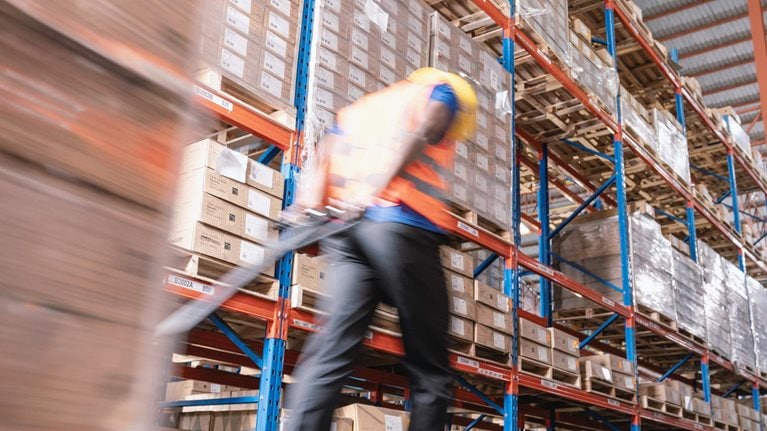
Category management’s next horizon: How distributors can outperform

Money can’t buy your employees’ loyalty

COMMENTS
Transformational travel is an area of tourism that focuses on personal growth, self-discovery, and transformation. It involves going beyond traditional vacation experiences and actively seeking out opportunities for personal development and growth through immersive and experiential activities.
In a nutshell, transformative travel is personal development, fulfillment, and deep meaning gained through travel; how travel can transform our lives and our selves. Transformative travel enhances your life and helps you live a more fulfilling life. In one way or another, both of us have had dramatic transformations in our lives, our values ...
While the term transformative travel may have many different definitions, each decided on by the traveler experiencing the transformation, one thing is certain amongst this, and that is this: transformative travel. Transformative travel is a travel experience or an experience within the journey that has changed something for someone, on a deep and personal level.
We Love Transformational Travel is the world's first booking platform designed for people looking for something new and more satisfying from their travels. Our wide range of carefully selected transformational retreats trips gives our visitors multiple opportunities to improve their lives. Be it becoming healthier and happier, managing stress ...
A safari in Kruger National Park, South Africa, to see the Big Five is transformational, offering a powerful connection to wildlife. 4. Trek along the Great Wall of China. Trekking along the Great Wall of China is one of those experiences that genuinely shifts your perspective.
As the global leader in transformational travel, we are building a thriving member community and delivering transformative education, training, and events that harness the power of transformational travel, regenerative development, and human connection that will change the world.
Transformational travel is not a property of an experience, but a process of personal growth and change. Learn how to create, deliver and market transformational travel experiences with The Long Run and The Transformational Travel Council.
In this sense, the tourism experience is transformative. The term transformative experience (TE) of tourists connotes the moment when tourists experience deep changes during travel and also after they return home ( Soulard, McGehee, & Knollenberg, 2021 ). The transformative potential of tourism and the power of transformative experience have ...
The Transformational Travel Institute (TTI) is on a profound journey, harnessing the power of travel as a force for positive change, not just in individuals, but in entire communities and our precious planet. We empower travel to assume its rightful role as a catalyst for the transformation and regeneration of both us and the world we inhabit.
A growing number of tourism studies reaffirm "transformative travel and tourism" as a potential catalyst for world betterment. While it mirrors much of experiential tourism, transformative travel is considered to be the next evolutionary step, defined by a shift towards personal development and a deeper communion with nature and culture.
15 Transformative Travel Experiences. Below you'll find a list of travel experiences that can change your life. Whenever you embark on a new adventure, it's important to remember what you get out of an experience is directly related to how you approach it. If you want to really "feel" something, you have to be open to it.
With that in mind, travelers should try to remain open to uncertainty and even disappointment. 2. Leaving. Leaving can awaken deep emotions that are tied to our earliest experiences of separation ...
Transformative travel is intentionally traveling to stretch, learn and grow into new ways of being and engaging with the world. Learn what it is, why it's a new travel trend, and where you can have a transformative experience in this ultimate guide.
Transformational travel is the latest buzzword in the travel world right now.. It is defined by the Transformational Travel Council (TTC) - an organisation that sets standards and promotes the development and participation in more ethical travel experiences to enrich travelers and positively impact travel destinations - as "intentionally traveling to stretch, learn and grow into new ways ...
Transformation through Travel. We believe travel is a vehicle for personal and collective transformation. When we travel, we have opportunities to learn, expand our worldview, evolve, and grow in profound ways. We consciously craft each journey with this wisdom, offering tools and practices to connect our guests deeply to the natural world ...
Learn how travelers seek personal transformation and growth through travel experiences that go deep. Explore data, interviews, and case studies on transformative travel and its implications for travel providers.
Any travel has a greater or lesser transformative effect, but the segment of transformative tourists differs by its deliberate intention to use travel for transformation. Getting involved in transformative travels is based on the same reasons as transformative learning - frustration with the current situation and the search for innovative ...
through travel. At Transformative Journeys, we specialized in curating unique and transformational travel experiences beyond your typical vacation. Travel can heal, inspire, and connect individuals, couples and families to their inner selves and the world around them. Our itineraries are designed to provide fulfilling holidays that rejuvenate ...
Subscribe. amsterdam, digital, Iceland, inclusive destinations, LGBTQIA+ travel, New Zealand, Portugal, Pride Month, queer travelers, Sydney. Exploring the world is a transformative experience ...
An editor and photojournalist for the Travel section, Stephen Hiltner drove 5,200 miles and visited all 13 of Saudi Arabia's provinces while reporting and shooting this story. June 5, 2024 ...
The Figge Art Museum said they've established The Linda and J. Randolph Lewis Wing after Randy and Linda Lewis of Davenport donated 44 works of modern and contemporary American art valued at $14 ...
Time will tell how much of a change that might mean for the North Shore. It was recently announced that Turtle Bay Resort is to be acquired by Host Hotels & Resorts, and transformed into a Ritz ...
Jun. 12, 2024, 02:01 PM. The journey of Duravo from tactical gear to a trendsetter in the travel essentials market is a story of innovation and transformation. Founders Matt Muhr and Dan Cooper ...
In collaboration with leading media platform Jing Daily, Marriott International unveils an in-depth report shedding light on the evolving landscape of luxury travel in China. Titled "Luxury Explored: Chinese Luxury Travelers' Evolving Desires," the report delves deep into the transformative trends and shifting preferences shaping the Chinese luxury travel market.
Travel Guide. Check-in. Check-out. Guests. Search. Explore map. Visit Elektrostal. Things to do. Check Elektrostal hotel availability. Check prices in Elektrostal for tonight, Apr 20 - Apr 21. Tonight. Apr 20 - Apr 21. Check prices in Elektrostal for tomorrow night, Apr 21 - Apr 22. Tomorrow night.
Things to Do in Elektrostal. 1. Electrostal History and Art Museum. 2. Statue of Lenin. 3. Park of Culture and Leisure. 4. Museum and Exhibition Center.
A mix of the charming, modern, and tried and true. See all. Apelsin Hotel. 43. from $48/night. Apart Hotel Yantar. 2. from $28/night. Elektrostal Hotel.
TGI Fridays called the new hotel-based restaurant "core to the brand's transformation strategy" after closing 36 restaurants in January.
Zvenigorod's most famous sight is the Savvino-Storozhevsky Monastery, which was founded in 1398 by the monk Savva from the Troitse-Sergieva Lavra, at the invitation and with the support of Prince Yury Dmitrievich of Zvenigorod. Savva was later canonised as St Sabbas (Savva) of Storozhev. The monastery late flourished under the reign of Tsar ...
Transformation can seem daunting, but business as usual is a losing strategy in a volatile marketplace where competitors are raising their game. A value-back approach applied across functions and subsidiaries helps distributors set, execute, and modify strategy in response to almost any challenge, from economic and geopolitical disruption to ...